Ljubljana related
STA, 15 July 2020 - One hundred years to the day the first ever doctorate was awarded at a Slovenian university. Ana Mayer received a doctorate in chemistry after completing at the newly-established University of Ljubljana her chemistry studies which she started in Vienna before the collapse of Austria-Hungary.
Mayer, born in 1895 in Lože near Vipava, south-western Slovenia, started studying chemistry and physics at the Vienna university in 1914.
She was forced to leave in 1918 when the university decided after the end of WWI that all Slavic students must leave it, according to the kvarkadabra.net website.
Mayer continued her studies after Ljubljana got the first university in 1919, earning the doctorate on 15 July 1920 as the first student and the first women.
Even before her doctorate, she started working at the university as an assistant at the Chemistry Institute, as the first woman to teach at the university.
Although she wanted to continue the academic career, she quit in 1922 for what could be a lack of funding at the institute, her marriage to Evgen Kansky, a professor of medicine, or because she was pregnant.
She thus went into business, setting up a company which became synonymous with quality chemical substances and pursued a successful business career.
She also established a factory of diethyl ether and solvents for varnishes in Podgrad near Ljubljana, laying the foundations for the chemical and pharmaceutical industries in Slovenia. The factory was first seized by the Nazis and then nationalised by the communist authorities in 1948.
Ana Mayer-Kansky had three children and died in 1962, whereas her husband, who was forced to retire in the autumn of 1945, died 15 years after her.
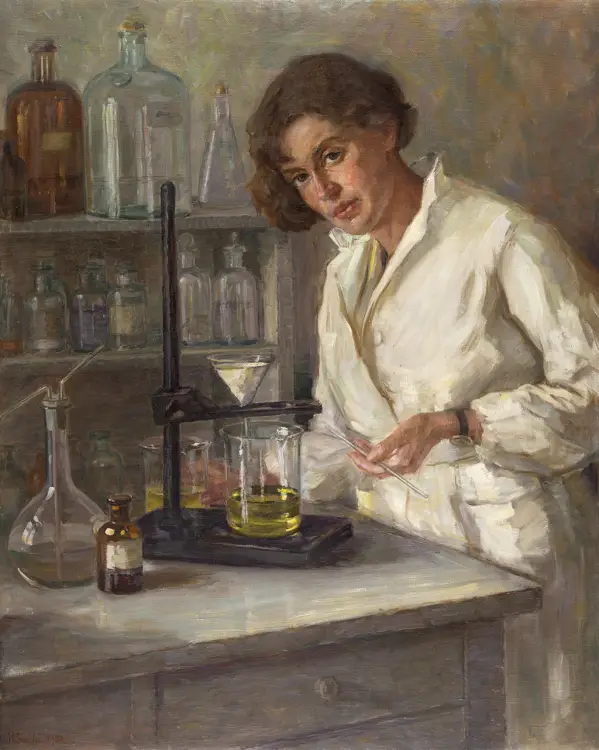
A painting of Ana Mayer-Kansky by Henrika Šantel,1932. Source: Wikipedia, publc domain
According to Slovenia's Statistics Office (SURS), almost 11,600 students have earned their doctorates in Slovenia since the country became independent in 1991.
There were over 3,300 doctoral students in the 2019/2020 academic year and in 2019 there were almost 13,200 persons with a PhD in Slovenia - a mere 0.6% of the population.
There was at least one person with a PhD in all but five Slovenian municipalities, while 18 municipalities had more than 100.
Ljubljana as the largest city and home to the oldest and largest Slovenian university had more than 5,530 doctors of science, which was 42% of all doctors in Slovenia.
The number of residents with a PhD in Slovenia is increasing, having risen by 585 a year over the past five years, according to SURS.
STA, 13 July 2020 - National Hall, a Slovenian centre in the heart of Trieste, was formally handed over to the Slovenian minority in Italy, as a document on its ownership transfer was signed on Monday with Slovenian and Italian presidents Borut Pahor and Sergio Mattarella on hand exactly 100 years after the original building was burnt down by Fascists.
The document sets down a timeline of the full handover, which will take several years, as the centre currently hosts one of the Trieste University schools.
It was signed by representatives of Italian authorities at various levels, the university's chancellor and the heads of both minority organisations, the SSO and KGZS.
Slovenian and Italian politicians hailed it as a milestone for the Slovenian minority as well as Slovenia-Italy ties, but also for Europe, testifying to its values.
President Pahor labelled it a historic event and an act that happens once in a hundred years. "The injustice has been remedied, justice has been done," he said in his address.
"What we're witnessing today is the forbidden dream coming true." At least for a day and metaphorically, Trieste is the capital of the EU because it celebrates the finest of values which are the foundations of the EU, he said.
His Italian counterpart Mattarella said that history could not be erased and the hard experiences people had experienced in this area could not be forgotten.
"This is why the present and the future call us to act in a responsible manner," he said, adding he and Pahor took a major step towards a dialogue of two cultures.
Slovenian Trieste-born writer Boris Pahor, who witnessed the torching of National Hall as a seven-year old, attended the event and was on the occasion decorated with Slovenia and Italy's highest state orders.
President Pahor then visited National Hall, saying today's events can serve as an inspiration "for our common European home" and further encouragement of the co-existence between Slovenia and Italy. They are unprecedented in the history of both nations, signalling "a new era".
Apart from attending the National Hall restitution event, Pahor and Mattarella went to the town of Basovizza to lay wreaths at the memorials to Slovenian victims of Fascism and to Italian victims of post-WWII killings, and jointly meet representatives of the Slovenian and Italian minorities, in what is the first such meeting.
Slovenian Foreign Minister Anže Logar, who attended the National Hall event together with Minister for Slovenians Abroad Helena Jaklitsch, spoke of a new page in the common future of the two nations, not only in Trieste but also in the EU.
His ministry also took the opportunity to again urge Italy to adopt a report on Slovenian-Italian relations in 1880-1956 which a commission of Slovenian and Italian historians compiled in 2000, and to take its findings into account when interpreting the periods of history the report covers.
National Hall was build in 1904 by the prosperous Slovenians from the area of Trieste as a unique state-of-the-art centre of commerce and culture.
Members of Italian Fascist and nationalist groups set it to fire on 13 July 1920, burning it to the ground, and then attacked another 21 Slavic institutions in Trieste.
The arson severely affected the political situation in the region, fuelling ethnic hate between Italians and Slovenians. After the Fascists came to power in 1922, ethnic minorities, including the Slovenian one, became a target of severe assimilation.
The centre was later nationalised, the minority claimed it back, but Italy committed to return it only in the 2001 law on the safeguarding of the Slovenian minority.
The restitution event was more modest than planned due to Covid-19 and the main cultural event marking the centenary of the arson was rescheduled to 13 July 2021.
Meanwhile, at the memorials in Basovizza Pahor and Mattarella held hands while standing in front of them in sign of reconciliation.
The Memorial to Basovizza Heroes is a site of the execution of three Slovenians and one Croat whom the Fascist authorities killed in September 1930.
The men were members of an illegal organisation set up in 1927 to organise a fight against the Fascist regime and its violent assimilation policy.
The Foiba of Basovizza is meanwhile a Karst chasm which the Italians have chosen as their symbolic memorial site for the victims of post-war killings.
Italy believes the communists threw the executed Italians in it, whereas some historians say it has been proven empty.
Pahor's visit to the foiba memorial recently stirred controversy in Slovenia, with some fearing it would give the Italian revisionists of history a fresh impetus.
Some 150 protesters gathered at a border crossing to protest against Pahor's act and a group appeared at the Memorial to Basovizza Heroes after the commemoration, accusing Pahor of treason.
The head of the 13 July Not In My Name civil initiative, Mauro Dornik, said Pahor paid his respects at a chasm which historians proved was empty.
By doing so, he "confirmed that we are a genocidal nation which went about killing Italians just because they were Italians", not because they were Fascists, and thus sided with Fascists.
He said that Mattarella had not posthumously amnestied the Slovenian anti-Fascists killed in Basovizza, which proved both presidents' tribute to the Slovenian victims of Fascism was not sincere.
There was also some opposition to the restitution of National Hall on the Italian far-right, with the CasaPound movement staging a small protest in Trieste.
STA, 11 July 2020 - Srebrenica needs to stay in our memory as a warning to the international community that such atrocities must never repeat or be permitted again. Denying or relativising these tragic events is unacceptable, the Foreign Ministry wrote to mark the 25th anniversary of the Srebrenica genocide. President Borut Pahor meanwhile urged reconciliation.
The ministry expects this year's commemoration to also be directed into the future. Slovenia is striving for a process of reconciliation in the area of the former Yugoslavia and for stability in the Western Balkans as a whole.
Many men began to leave the forests and surrender after realizing they had no escape. One such man was Ramo Osmanovic, who was forced by Serb soldiers to call his son, Nermin, into surrender. Both father and son were executed. #SrebrenicaGenocide pic.twitter.com/QwXsXgtPQK
— Bosnian History (@BosnianHistory) July 11, 2020
The reconciliation process is key for harmony and mutual trust among nations and a European future for the region, Saturday's press release by the ministry says.
A quarter of a century is passing this year since more than 8,000 Bosniak Muslims, mainly men and boys, were killed by Bosnian Serb forces in a three-day massacre in and around the town of Srebrenica. Since 2009, 11 July has been a day for EU commemoration of the Srebrenica genocide.
The central ceremony is taking place at the Potočari memorial centre near Srebernica today, but due to the Covid-19 pandemic foreign state officials are not present in person.
Slovenian President Borut Pahor addressed participants via video, saying history could not change, but the future could. Key for the future of Bosnia-Herzegovina is truth as opposed to denial, respect as opposed to hate, open dialogue as opposed to conflicts, he said.
Forgiveness and respect for diversity is vital, he added, arguing reconciliation is not action of the past but a guarantee for coexistence and friendship that comes from a shared pain.
Moreover, a peaceful, European future for Bosnia-Herzegovina requires courage. Courage is the only thing - despite terrible pain that accompanies the memory of the victims of genocide - that can lead to forgiveness, reconciliation, dialogue, cooperation and restored trust, Pahor added in the address published on Twitter.
Water mills used to be a common sight in the Slovenian countryside. Inland, the owners of the mills were usually feudal landowners; i.e. the castle mills would mainly grind grain for the needs of the Lord. Smaller craft and peasant mills would on the other hand grind only for their own needs, and in the Littoral the owners of the mills were often townships. To enable milling, the accompanying activity of making millstones was developed.
At the beginning of the 19th century, water mills were still regulated by the 1770 Mill Order, which prescribed sanitary measures and customer protection provisions. The Mill Order paid special attention to the care of millstones. During times with a low water level the miller was obliged to grind first for his customers and only then for himself. It was strictly forbidden for millers to discriminate between individual customers, and charging methods were also prescribed by the Order. Land lordships were in charge of controlling the implementation of the Mill Order.
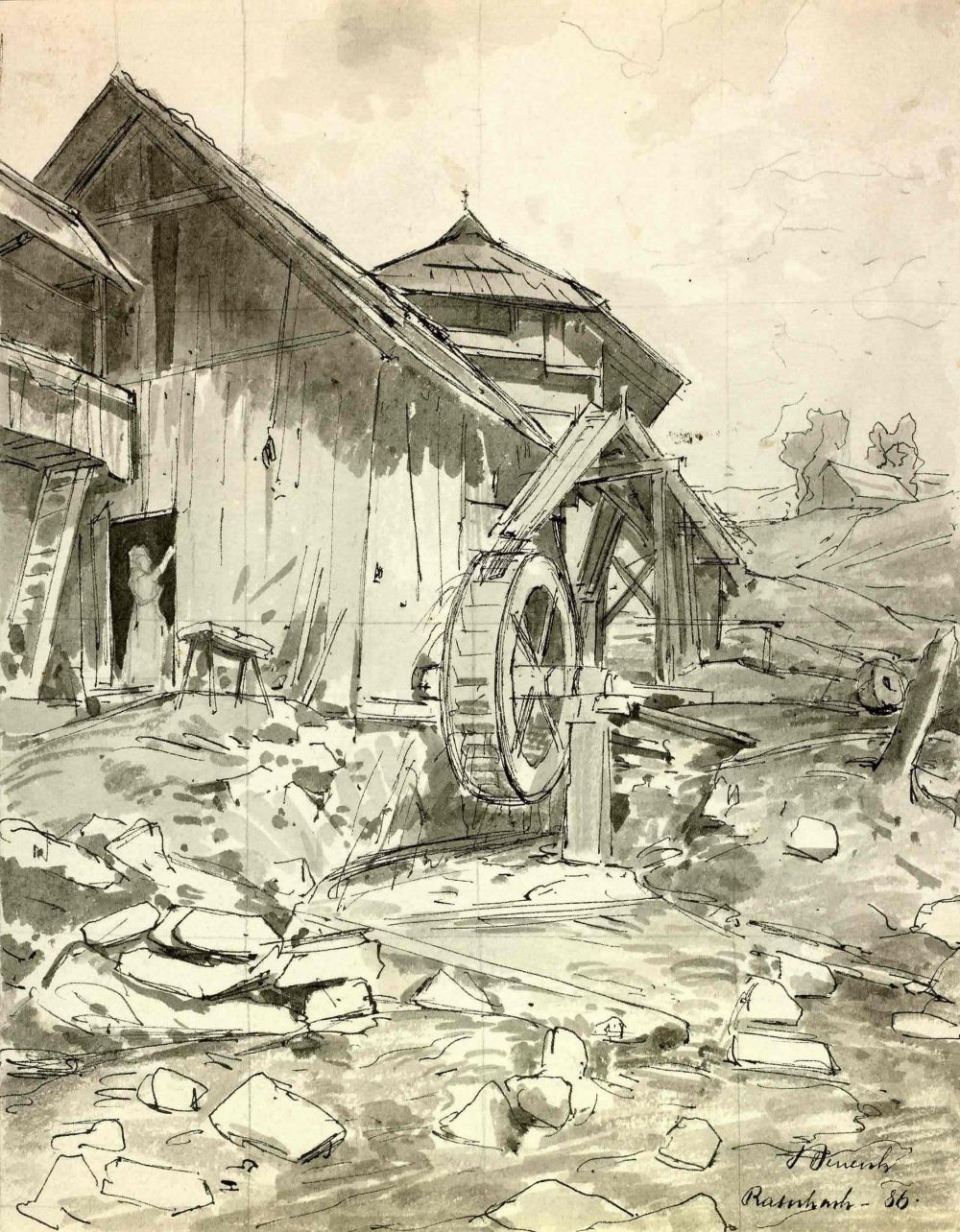
In 1814 new provisions were included into the Mill Order, requiring professional training on the part of the mill owner, and customers were now free to choose the mill where they would grind grain and allowed to be present at the grinding. The miller was obliged to grind the grain of each customer separately, and was not allowed to mix it with other customers’.
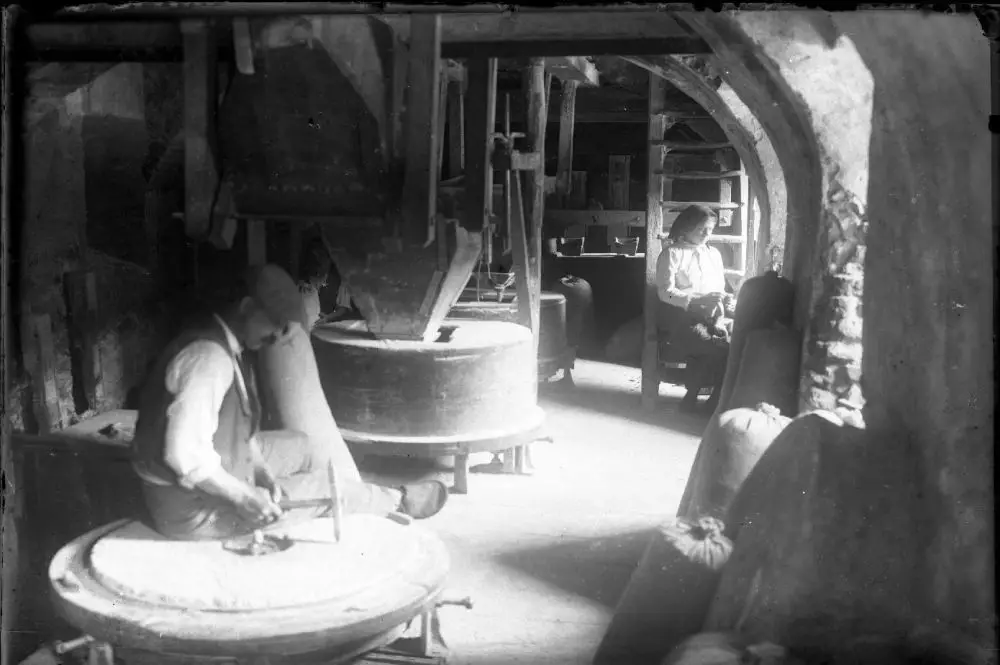
The water-flow energy was also used for log, saws and sometimes both devices were combined in one place.
With the introduction of the steam engine, mills began to move from the riversides to the shore. The first steam engine in Slovenia was set up in Trieste in 1819 by a Frenchman, Sonnerat. Instead of millstones roller mills were used, the capacity of which exceeded the previous methods of grinding several times. Further enlargements of these mills also required new propellants. All this led to the collapse of the old stone mills and water drive systems.
The introduction of roller mills (first in 1850 in Ljubljana, then in Ajdovščina, Domžale, Kranj, Maribor and Središče ob Dravi) marked the beginning of the Slovenian milling industry. In connection with the steam mill plants, several pasta factories emerged in Ljubljana, Maribor and Ilirska Bistrica in the last years of the 19th century, and most notably the Pekatete pasta plant from Bistrica, the brand that survived almost a century before being merged into Zlato polje pastas of Žito.
Although some 1,700 farm mills existed in the end of the 19th century, only a few survived to become part of today’s protected cultural heritage.
In 1945 the RTV Slovenia Big Band (Big Band RTV Slovenija) performed for the first time during the reopening ceremony of Postojna Cave at the end of the war.
Immediately after liberation, the conductor and composer Bojan Adamič, who had his own orchestra during the Second World War, began to gather musicians for his new band called the Dance Orchestra of Radio Ljubljana. Their first public performance happened on June 27, 1945 at the reopening of Postojna Cave. The Dance Orchestra of Radio Ljubljana, officially became part of Radio Ljubljana in the autumn of that year. In the period that was not in favor of "American imperialist" music, Adamič skillfully introduced jazz elements into the otherwise rather "socialist" repertoire and successfully conducted the orchestra for sixteen years.
In 1961, Adamič was succeeded by Jože Privšek, who managed to raise the Big Band to the top of European entertaining and serious music standards. Over the decades of its operation, the Big Band of RTV Slovenija has also organized a number of concerts and successful tours around Europe, recorded many albums, and above all made a decisive contribution to the development of jazz, instrumental and vocal pop music. You can follow them on Facebook here.
STA, 13 June 2020 - A ceremony on Saturday marked the 75th anniversary of the liberation of the only concentration camp on Slovenian soil, the labour camp below Ljubelj Pass. Speakers highlighted the need to preserve the memory of the atrocities and drew parallels with the present.
Jana Babšek, the director of the Tržič Museum, stressed that around 2,000 internees of what was a branch of the notorious Mauthausen camp were forced to work in harsh conditions for 23 months to build the mountain pass.
Commemoration of 75th anniversary of the liberation of the camp in Ljubelji, Mauthausen sub-camp, where 450 Poles were condemned to slave labor as part of the German policy of extermination
— PLinSlovenia (@PLinSlovenia) June 14, 2020
Thny HE @BorutPahor & Trzić Museum for building memory of victims of nazism&totalitarism pic.twitter.com/cCvacMXtIC
"As we browse through the memories of the former inmates, who endured inhuman conditions and evil, two wishes transpire: never to forget what happened, and to prevent something similar from happening in the future," she said.
She said it was necessary to educate youths in particular and explain what had led to such extreme events, noting that the current circumstances were creating challenges that are in many ways very similar to those in the past.
Jani Alič, a senior official of the WWII Veterans' Association, likewise evoked the current global events when he said that "Our veterans say that if we defeated the enemy during the war, we will defeat the contemporary hidden enemy as well."
This year a series of large-scale events was supposed to be held around Europe to mark the 75th anniversary of the liberation of Nazi concentration camps, but many had to be cancelled or scaled back due to to the coronavirus epidemic. The ceremony at Ljubelj was therefore smaller than usual.
Predsednik Republike Slovenije Borut Pahor se je danes udeležil slovesnosti v spomin na 75. obletnico osvoboditve koncentracijskega taborišča pod Ljubeljem. Pred slovesnostjo je predsednik republike k spomeniku J'accuse – Obtožujem položil venec. pic.twitter.com/w66gFY4G5Z
— Borut Pahor (@BorutPahor) June 13, 2020
Prior to the event, a wreath laying ceremony was held at the monument "J'accuse - Obtožujem" on the site of the camp. Delegations of several European countries laid wreaths, as did President Borut Pahor, who made special mention of the move by Germany and France to lay a wreath together.
"This is s nice symbolic event that invites everyone to remember the past in the spirit of reconciliation, and in particular to build Europe together," he said.
Ljubelj is the site of the remains of the only concentration camp in Slovenia, a branch of the notorious Mauthausen camp that served as a labour camp.
Around 1,800 internees, mostly political opponents of the Nazi regime and the majority of them French nationals, were forced to build a tunnel between Slovenia and Austria in very difficult conditions. At least 34 people died.
The camp was liberated on 8 May 1945.
In 1945 Partisan units marched into the Slovenian capital, Ljubljana. This was the end of several days of fierce fighting between the Nazi occupation forces and the 7th Corps and 29th Herzegovinian Strike Division of the Yugoslav Army.
The Province of Ljubljana was the central-southern area of Slovenia, created on May 3, 1941. In 1943 the province was occupied by Nazi Germany as part of the Operation Zone of the Adriatic Littoral, territories previously administered by Fascist Italy.
Under Italian control the Province of Ljubljana was subjected to brutal repression after the emergence of resistance and the occupying fascist forces erected a barbed wire fence around the city in order to prevent communication between the underground Liberation Front activists in Ljubljana and the Slovene Partisans in the surrounding countryside.
In memory of May 9, 1945 and the interwar wire ring around Ljubljana a sports and recreational event was proposed by the Ljubljana District Committee of the Association of National Liberation Army Combatants during the first Slovene Festival of Physical Culture in 1957. The event has since become traditional, and The Path of Remembrance and Comradeship (Pot spominov in tovarištva, also known as Path along the Wire Fence of Occupied Ljubljana) is now protected as a historical monument with a Town Act specifying that a memorial walk takes place along the wire fence of occupied Ljubljana each year on May 9th.
National Hall back into Slovenian hands 100 years after Fascist arson
Slovenian minority sees Narodni Dom restitution as important gesture
Historians say authorities failed to react to National Hall arson
National Hall back into Slovenian hands 100 years after Fascist arson
STA, 4 June 2020 - One hundred years since National Hall in Trieste was burnt down by Fascists, Italy is expected to give this former state-of-the-art commercial and cultural centre of Slovenians in Italy back to the Slovenian ethnic minority. The symbolic gesture could bring about the much needed reconciliation between the minority and majority populations.
Narodni Dom, as is called in Slovenian, epitomised the economic and political power of Slovenians in Italy, which accounted for around 25% of Trieste population before WWI.
Its torching on 13 July 1920 symbolises the onset of Fascist violence against Slovenians. A pivotal report on Slovenian-Italian relations in 1880-1956, which was released in 2000 but has not been published in Italy to date, says the arson "publicly heralded the long-lasting violence against Slovenians".
The multi-purpose centre was launched in 1904 featuring a bank, a hotel, a library, a 400-seat theatre, a sports hall, a music school, a print shop and the newspaper Edinost, several associations, restaurants and bars as well as flats.
Prosperous Slovenian politicians and businessmen from Trieste, who were behind the idea to build such a unique centre unknown of in Europe or the US at the time, selected Maks Fabiani, one the finest architects in the Austro-Hungarian Empire, to design it.
After it was burnt down, the centre was repaired and turned into Regina Hotel, which was closed soon after WWII and bought by the Friuli-Venezia Giulia region to be later given to the University of Trieste.
Although the Slovenian minority had wanted to have National Hall returned ever since the end of WWII, it was not until 2001 that Italy committed to returning it in an umbrella law to safeguard the minority.
The centre, now valued at over nine million euro, should have become available to Slovenian and Italian cultural and scientific organisations within five years since the passage of the law, so the delay prompted the Slovenian and Italian foreign ministers, Karl Erjavec and Angelino Alfano, to sign a deal in 2017 to speed up its renovation and return.
What sparked the attack on National Hall was an incident involving a Yugoslav flag in Split, a port in the Kingdom of Serbs, Croats and Slovenes, where two Italian seamen died a day earlier in a clash with locals.
Thousands of protesters that gathered in Trieste on 13 July demanded revenge for the two victims, urging the authorities to hunt down the "dangerous" Yugoslavs, writes historian Milica Kacin-Wohinz in her book Slovenians in Primorska Region under Italian Occupation in 1918-1921, which is also available in Italian.
An innocent man died at the rally, with the Fascists claiming he had been killed by Slovenians, which fuelled the irate crowd to march towards National Hall.
The centre was closed and guarded by over 400 men, including soldiers, by the time the crowed arrived, as the Italian authorities had anticipated it could become a target of attacks.
When several shots were fired from Balkan Hotel within the centre and two grenades were lobbed from it, the soldiers there to protect National Hall turned the fire towards the hotel, which prompted the protesters to break in, douse the centre with petrol and set it on fire. They also prevented firefighters from putting the fire out, so it was in ruins by the next day.
The arson was followed by the protesters raging around the city attacking several other Slavic institutions, including the office and flat of the representative of the Kingdom of Serbs, Croats and Slovenes, which later became known as the Trieste Kristallnacht.
The turmoil worsened the political situation in Friuli-Venezia Giulia, fuelling ethnic hatred, which the Fascists harnessed as they were rising to power. When the Fascist regime came to power in October 1922, ethnic minorities became a target of heavy assimilation pressure.
Slovenians were first deprived of the right to their mother tongue, which was followed by the closure of Slovenians schools and other institutions, by political persecution, confiscation of property and deportations.
This led to young Slovenian patriots getting organised within the TIGR organisation in 1927, around a decade after Trieste as well as a large chunk of lands populated by Slovenians became part of Italy following the collapse of Austria-Hungary and the end of WWI.
When Italy and the Kingdom of Serbs, Croats and Slovenes signed the Treaty of Rapallo in November 1920 setting the border after WWI, around 500,000 Slovenians and Croats came under Italy.
And although Trieste and a large area populated by Slovenians was also assigned to Italy after WWII, Trieste has remained a political, economic and cultural centre of the Slovenian minority to this day, although relations between the minority and Italy have never been fully tension-free.
It is estimated that some 80,000 ethnic Slovenians live in Friuli-Venezia Giulia, an area where Slovenians have been present from the 13th century according to historical records.
Writer Boris Pahor, at the age of 106 still a vocal advocate of Slovenian minority rights from Trieste, witnessed how National Hall was burnt down.
He told the STA that for him as a seven-year old and for Slovenians in Trieste the arson "meant the end of the world". He described the incident in two of his works, including the 1972 novel Trg Oberdan (Oberdan Square).
Pahor has taken this opportunity to once again urge Italy to publish the 2000 report on Slovenian-Italian relations, which was compiled by historians from both countries. "The report is still locked in Rome, it has never come to schools," said Pahor, who believes there is still a great risk of Fascism reappearing.
Slovenian minority sees Narodni Dom restitution as important gesture (feature)
STA, 4 June 2020 - The Slovenian minority in Italy see the planned returning of Narodni Dom (National Hall) to the minority on the 100th anniversary of its arson as a symbolic act of reconciliation and a correction of history. Narodni Dom represents the lungs of the Slovenian community, Council of Slovenian Organisations (SSO) head Walter Bandelj has told the STA.
"The restitution of National Hall would be a huge gesture for the minority, a rectification of history," said Bandelj.
He sees the building designed as a Slovenian cultural centre as the "lungs of Slovenian identity", which is why it is important that it is returned to Slovenians. The building is in the centre of Trieste, which highlights the role Slovenians have had in the city, he said.
According to Italian Senator Tatjana Rojc, a member of the Slovenian minority, National Hall was a symbol of the economic and cultural rise of the Slovenian middle class in Trieste.
It was to show that Slovenians are not only the proletariat in Trieste as some still think today, that they are not just port workers, maids and laundresses, but also people who are successful in business and culture, she said.
Igor Gabrovec, an ethic Slovenian who is member of the regional legislative assembly of Friuli Venezia Giulia in Italy, believes that by building it, Slovenians had proven to Trieste and especially themselves that they were economically and politically successful, "which is why the attack on National Hall was a shot through the heart of the Slovenian community and the idea of pan-Slavic unity".
The restitution of National Hall would be a "symbolic act of reconciliation which we all justifiably expect a hundred years after the arson of this building on 13 July 1920," said Ksenija Dobrila, the head of the Slovenian Cultural and Economic Union (SKGZ). "It would be a confirmation that we are full-fledged members of this space."
Italian Ambassador to Slovenia Carlo Campanile agrees that Italy would thus send a future-oriented message. "It will be an invitation to cooperation, a message that we wish to grow and develop together in the spirit of friendship and cooperation while dealing with our common problems and challenges".
Yet whether or not Italy will indeed transfer the ownership of the building to the minority organisations on 13 July, when the presidents of the two countries, Borut Pahor and Sergio Mattarella, are expected to meet to mark the anniversary of the arson, is not certain yet.
The ambassador did not exclude this possibility although noting that the Covid-19 epidemic had affected all proceedings in Italy lately. "Of course this must not be an excuse. It's a path we've started and I hope it will be concluded as soon as possible. There's a will for this to happen on both sides," he said.
Italy committed to returning the building to Slovenians in the 2001 act protecting the Slovenian minority. The law said the building, which was rebuilt between 1988 and 1990, and now houses the headquarters of the college of modern languages for interpreters and translators, part of the University of Trieste, as well as a Slovenian information centre, should be returned within five years.
Since nothing would happen over the next 16 years, the then foreign ministers, Karl Erjavec and Italy's Angelino Alfano, reached an agreement in 2017, reaffirming Italy's commitment and set the end of 2020 as the final deadline for the return.
The process got an additional boost with talks between Pahor and Mattarella, who expressed the wish to meet in Trieste on 13 July and reach an agreement on the restitution.
"A few more steps are needed before minority organisations move to National Hall, but the outlook is very good," assessed Slovenian Consul General in Trieste Vojko Volk.
He sees this as "the biggest event for the Slovenian minority in Italy since independence if not of this century".
Bandelj said the minority was hoping that at least an agreement on ownership would be activated before 13 July, which would say that "we will become owners in two to three years".
He said it was understandable that the University of Trieste needed some time to move its college out the building. A reasonable deadline would be set, he noted.
Bandelj said the minority was financially capable of owning the building. "We have organised to have all institutions that would operate in the building after it is returned to Slovenians pay rent so no extra costs would emerge."
Dobrila stressed an agreement on ownership was important for the organisations to have the freedom to develop the concept of the building, and to restore the "original idea of our ancestors and create heritage for the generations to come".
She envisions the building as a centre of all communities in Trieste, dedicated to art, culture and research.
Both Dobrila and Bandelj deem the planned visit of the two countries' presidents on 13 July a far-sighted sign of peace, harmony and coexistence. A ceremony with 150-200 participants at the opera house, which was planned for the anniversary, was postponed for a year because of coronavirus.
Historians say authorities failed to react to National Hall arson (feature)
STA, 4 June 2020 - A hundred years ago, the Italian state authorities allowed the torching of Narodni Dom (National Hall) in Trieste by not punishing anybody for the crime and the Kingdom of Serbs, Croats and Slovenes was too weak to react, historian Borut Klabjan has told the STA. Italian historian Raoul Pupo said investigating the matter did not suit the Fascists.
Before the First World War, Trieste was a global, multicultural, multi-ethnic city that attracted people from all over the world who wanted to benefit from its prosperity and rapid growth, said Klabjan of the Institute for History Studies at the Koper Science and Research Centre.
"Trieste before the First World War was definitely the city with the highest share of Slovenians. Back then, Trieste had 220,000 to 230,000 people, and a quarter, perhaps even a third of them, were Slovenians. Ljubljana had 50,000 people at the time, more than half of them Slovenians. Trieste was in fact the largest Slovenian city."
The war cut into this flourishing city, and when the Austro-Hungarian Empire fell apart, Italy occupied the area. Its plan was homogenisation of the territory and it did not recognise others on it - neither Germans in the north nor Slovenians and Croats in the east.
Tensions built up soon, which led to the arson of the National Hall, a Slovenian commercial and cultural centre, on 13 July 1920.
According to Pupo, the multicultural and cosmopolitan character of Trieste was a heritage of the pre-national period of the city's history in which collective identities were not formed based on people's origin or their mother tongue but based on their faith, loyalty to institutions etc.
But in the second half of the 19th century, a process of parallel competitive nationalisation of language groups, which was typical of the Hapsburg monarchy, started in Trieste as well, undermining the spirit of tolerance.
"National movements have very different sources of inspiration, as the Italian national movement copied the French model of voluntary nation, while the Slovenian national movement followed the example of the German ethicist concept.
"Both shared the desire to have exclusive power over a territory, which should be achieved using any means available," said Pupo, a lecturer at the University in Trieste.
"The arson was not an act by an Italian state institution but the attitude of the state institutions was what had allowed it to happen," said Klabjan, who is working on a monograph about the events that happened on 13 July 1920 together with his colleague Gorazd Bajc.
The attack on National Hall was the first by Fascists, the largest and not nearly the only one. "Given that the reaction of the authorities was such that they blamed Slovenians for provoking Italians, and not reconciling themselves to the fact that the area became Italian, this attitude of the authorities that did not punish anyone for the arson, gave wings to the movement."
In a matter of months, the movement brought together the majority of the extremists who were involved in the arson and the Fascist movement began. After National Hall, they targeted other property of Slovenians and political opponents, especially socialists, communists and republicans, who wanted to stand up to Fascist violence.
The leader of the Fascists was Francesco Giunta, who came to Trieste in the spring of 1920, when the situation was perfect for developing Fascist ideas, a mix of nationalist claims in relation to the then ongoing Paris Peace conference, and political pressure, Klabjan said.
Neither he nor others who took part in the National Hall arson were punished because the authorities found them useful and wanted to use them to crush socialists, communists, Slovenians and Croats.
The young Kingdom of Serbs, Croats and Slovenians (SHS) also failed to respond, presumably "to keep a low profile in relation to Italy", Klabjan said, noting that he was still investigating this aspect.
The SHS was afraid to anger Italy, with which it needed to reach an agreement on the borders as soon as possible, so "in relation to Italy it was the weaker partner". It did not have a lot of room to manoeuvre either bilaterally or multilaterally.
Evidence suggests the SHS did not respond to the National Hall arson but only to the subsequent attack on an office of a delegation of the SHS.
The latter was also what triggered a reaction from foreign consuls in Trieste. The British, French, Czechoslovak and American consuls thought about taking steps but failed to do so in the end, partly because the SHS did not react.
But documents show that representatives of other countries blamed the Italian authorities for not preventing the havoc in the city, Klabjan said.
Pupo, a member of the Slovenian-Italian historic and cultural commission which drew up a report on the relations between the two nations from the late 19th century until after the Second World War a few years ago, believes nobody was ever punished for National Hall arson because this did not suit the Fascists or state institutions, "which already covered for them".
"It was not good to investigate details which could potentially undermine the official reconstruction of events drawn up by civil commissioner Mosconi.
"There are still so many opaque aspects to the whole incident that many things remain unclear to this day: who stabbed two persons in Piazza Grande, of whom one later died? Who dropped a bomb or bombs? Who shot? Who knows ..."
STA, 9 May 2020 - Russian Ambassador Timur Rafailovic Eyvazov laid a wreath at the site of a former Nazi prison camp in Maribor on Saturday in memory of several thousand Russian prisoners of war who died there. He said keeping the memory alive was important to prevent history repeating again.
The building of the former Stalag XVIII D camp is being turned into a museum after the Maribor municipality has bought the plot from a private owner, while Russia is to provide the funding to create a museum.
Additional exhibition material was put on show on the occasion of Victory Day to bear witness to the developments there during Second World War.
The exhibition is expected to open to broader public in the autumn, which would make it a real museum after it has so far been open only on special occasions and mostly only to professionals.
#VictoryDay #ДеньПобеды
— Russian Emb/Slovenia (@AmbrusSlo) May 9, 2020
Veleposlanik Rusije Timur Ejvazov, župan mestne občine Murska Sobota, vodstvo ZZB NOB in društva Slovenija-Rusija so položili vence pred spomenikom sovjetskemu vojaku in jugoslovanskemu partizanu v Murski Soboti. Slovesnosti so potekali tudi v Mariboru pic.twitter.com/Mn5d3oSsUs
Ambassador Eyvazov, who took office in Slovenia in January, reiterated his country's commitment to the project. "We still don't know how many people died here, but the figure must have been very high. The facility is exceptional because it has remained untouched," he told reporters.
"The project is exceptionally important in particular for the younger generations to learn the truth about the horrendous crimes that were being committed here 75 years ago. It's important to make sure such horrific history will not be repeated again." said the ambassador.
During WWII, the complex of a defunct customs warehouse in the Maribor Melje borough was part of a German Nazi prison camp. Between September 1941 and March 1942, it held several thousand Russian POWs in extremely inhumane conditions and most of them died there from exhaustion, starvation or disease.
The search through various European archives has so far yielded close to 3,000 names of Soviets who died in the camp. "We want to press on to find all 5,000 names of the Soviet POWs killed," said Janez Ujčič, director of the International Centre for WWII Research in Maribor, which manages the museum.
The plan for the museum was unveiled in 2014 during a visit by Russian Foreign Minister Sergey Lavrov but it has so far hosted only dedicated conferences. A one-storey hall, the complex does not have basic infrastructure such as electricity or toilets, but this should be tackled by autumn.
"Today's Victory Day ceremony represents the first step to museum activity in this former camp. With the present exhibition we've launched a lasting renovation of this complex," said Ujčič, adding that the museum had sparked a lot of interest in the international expert community as well as in Russian media.
The three-part exhibition chronicles Maribor's resistance in 1941, the city's German occupation, the tragedy of the Russian POWs in the camp and the joint struggle of the Rad Army and Partisan resistance movement in the former Yugoslavia.
Today is the 1 May national holiday for Labour Day, which as - as you might imagine - quite a big deal in Yugslavia. Yo ucan get some idea of this in the fascinating pictures of the Labour Day Parade in Ljubljana, 1961, going along today's Slovenska cesta, and taken by Jože Gal.
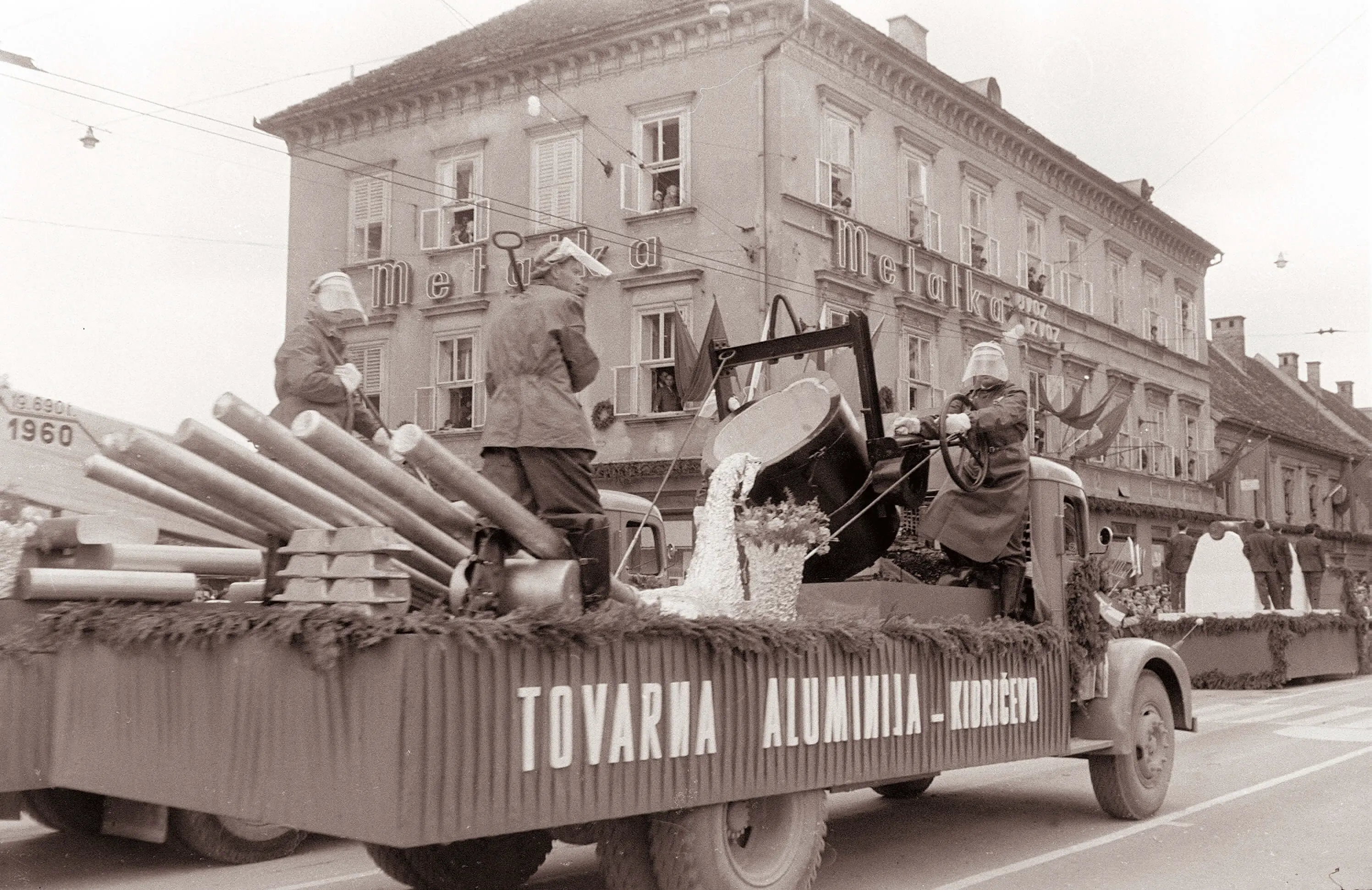
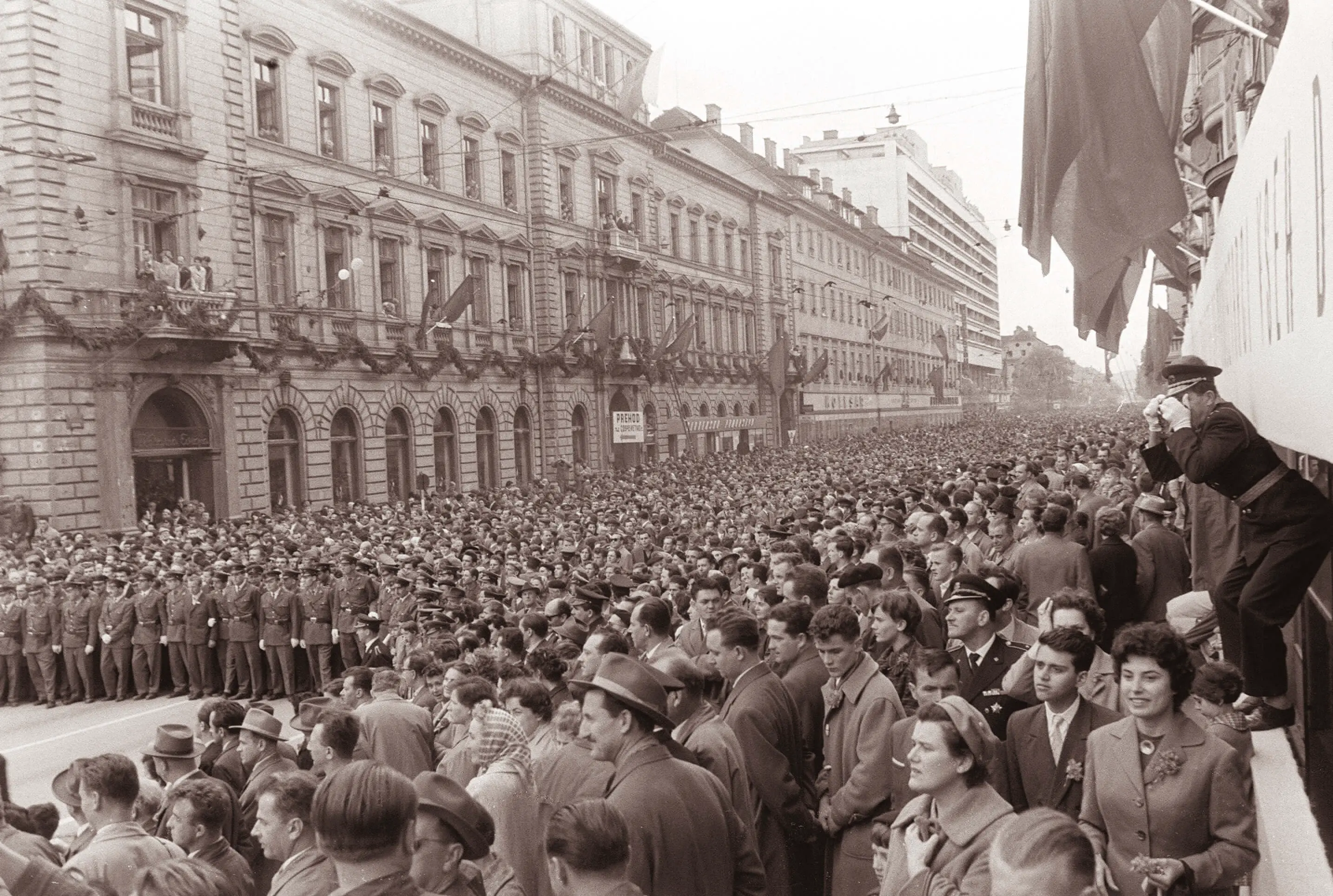
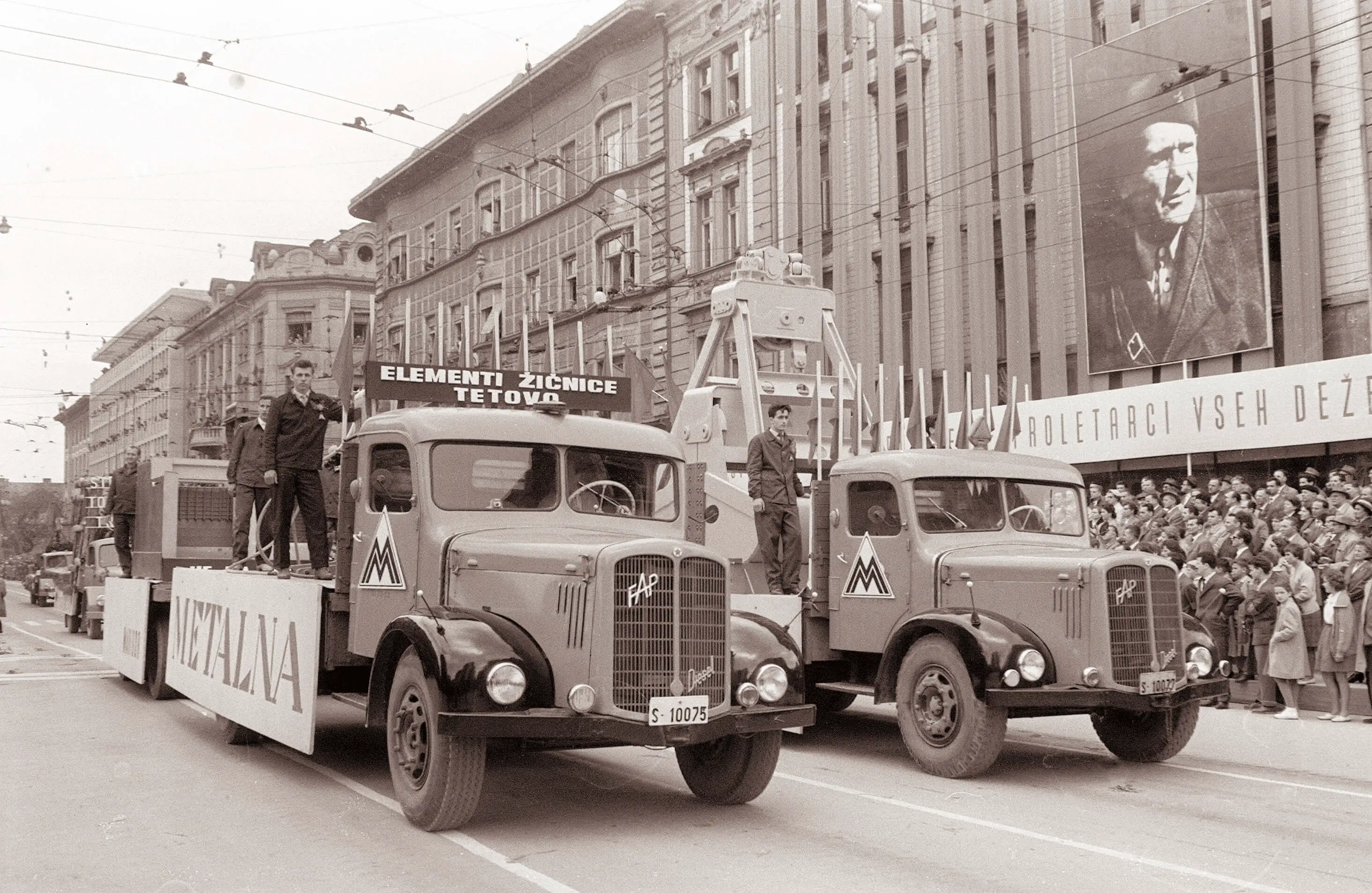
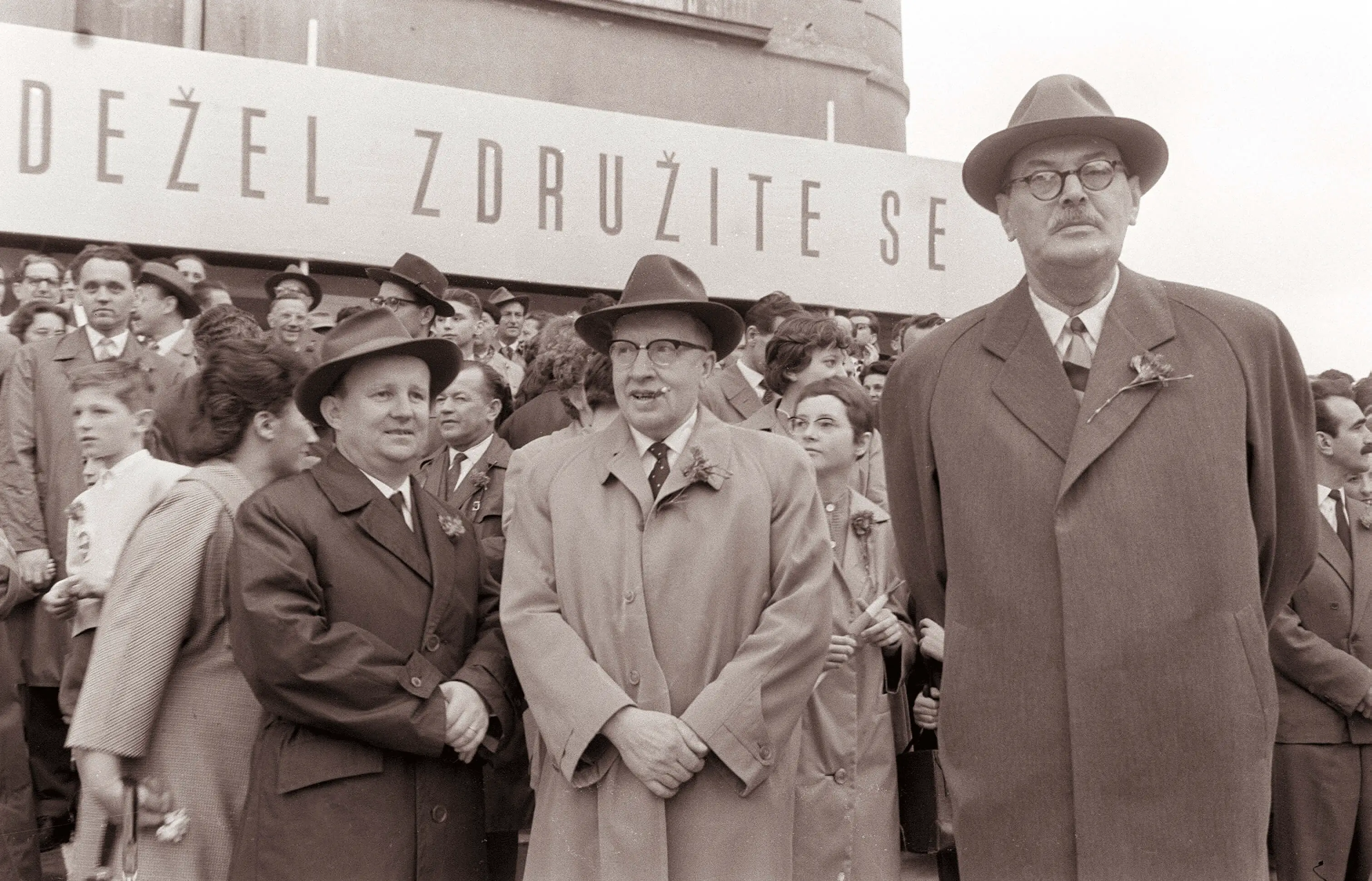
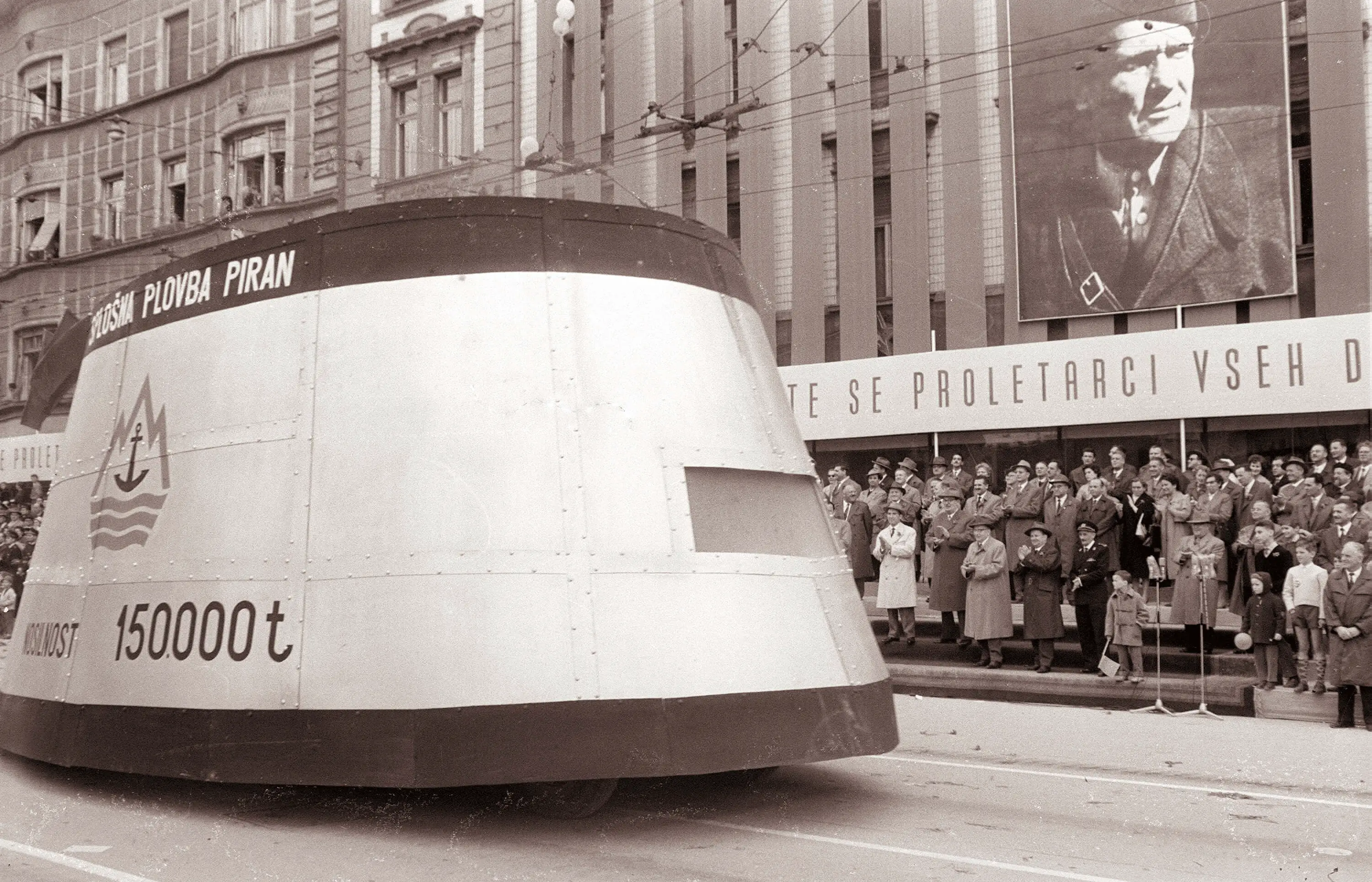
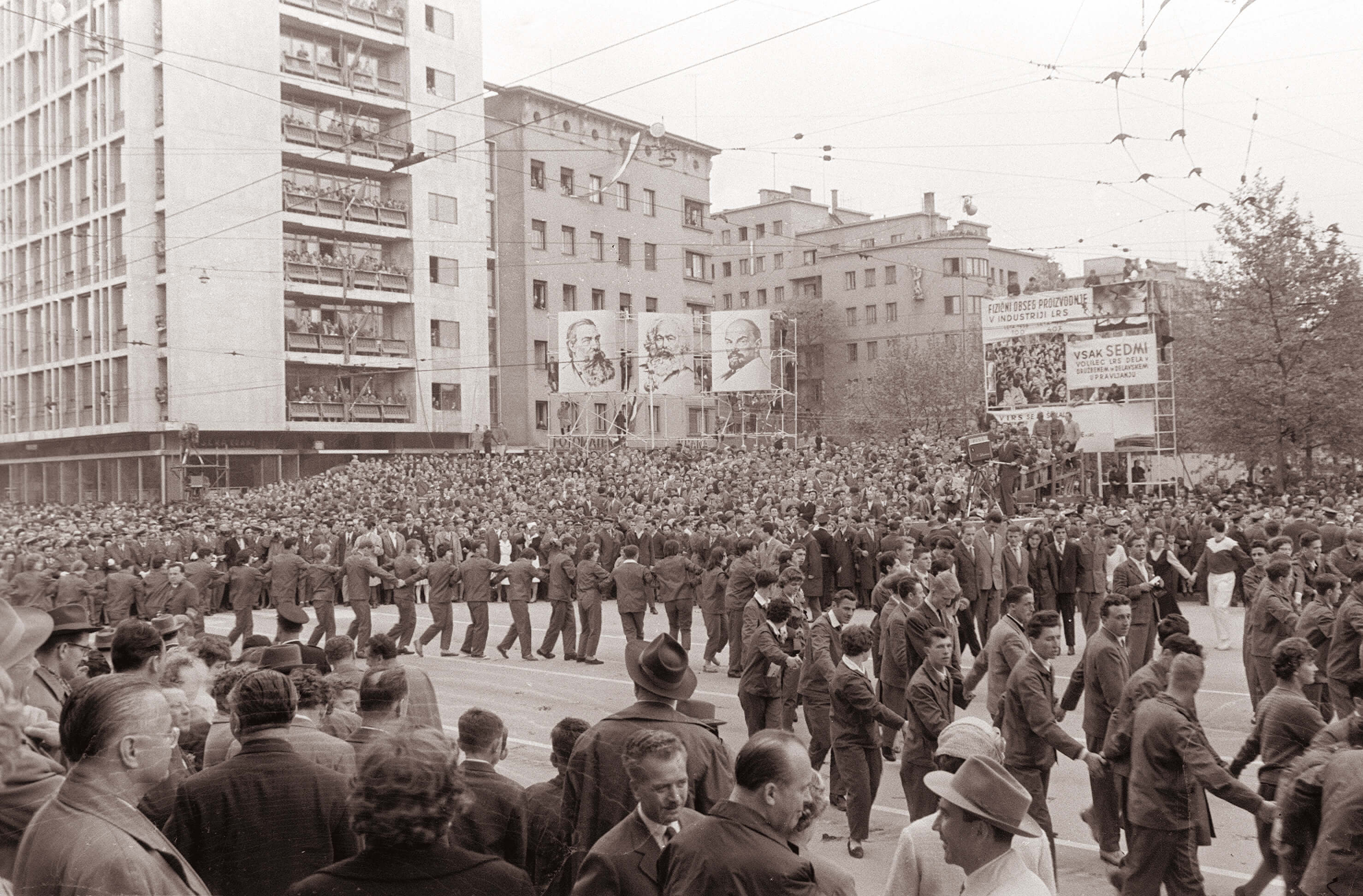
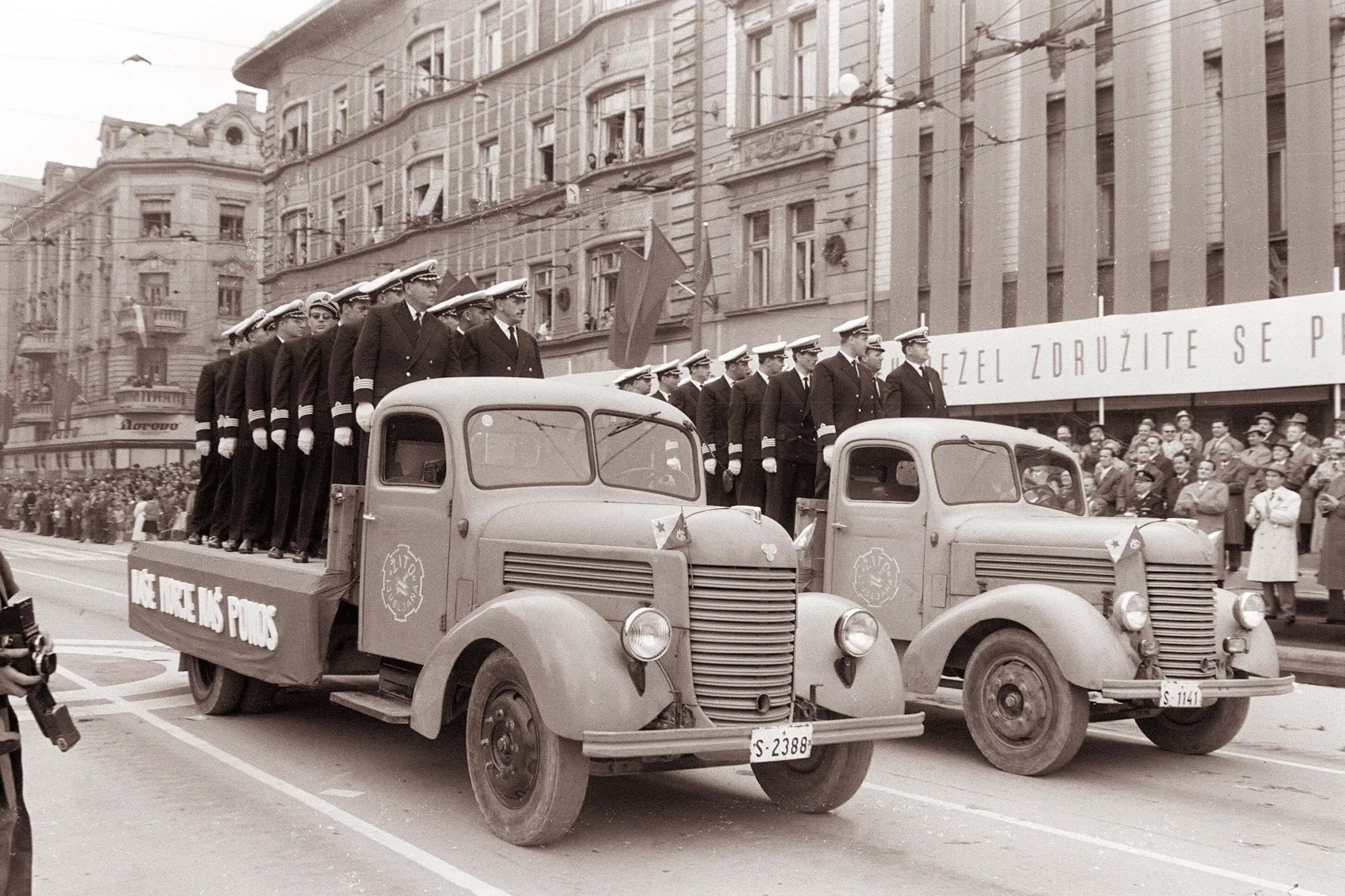
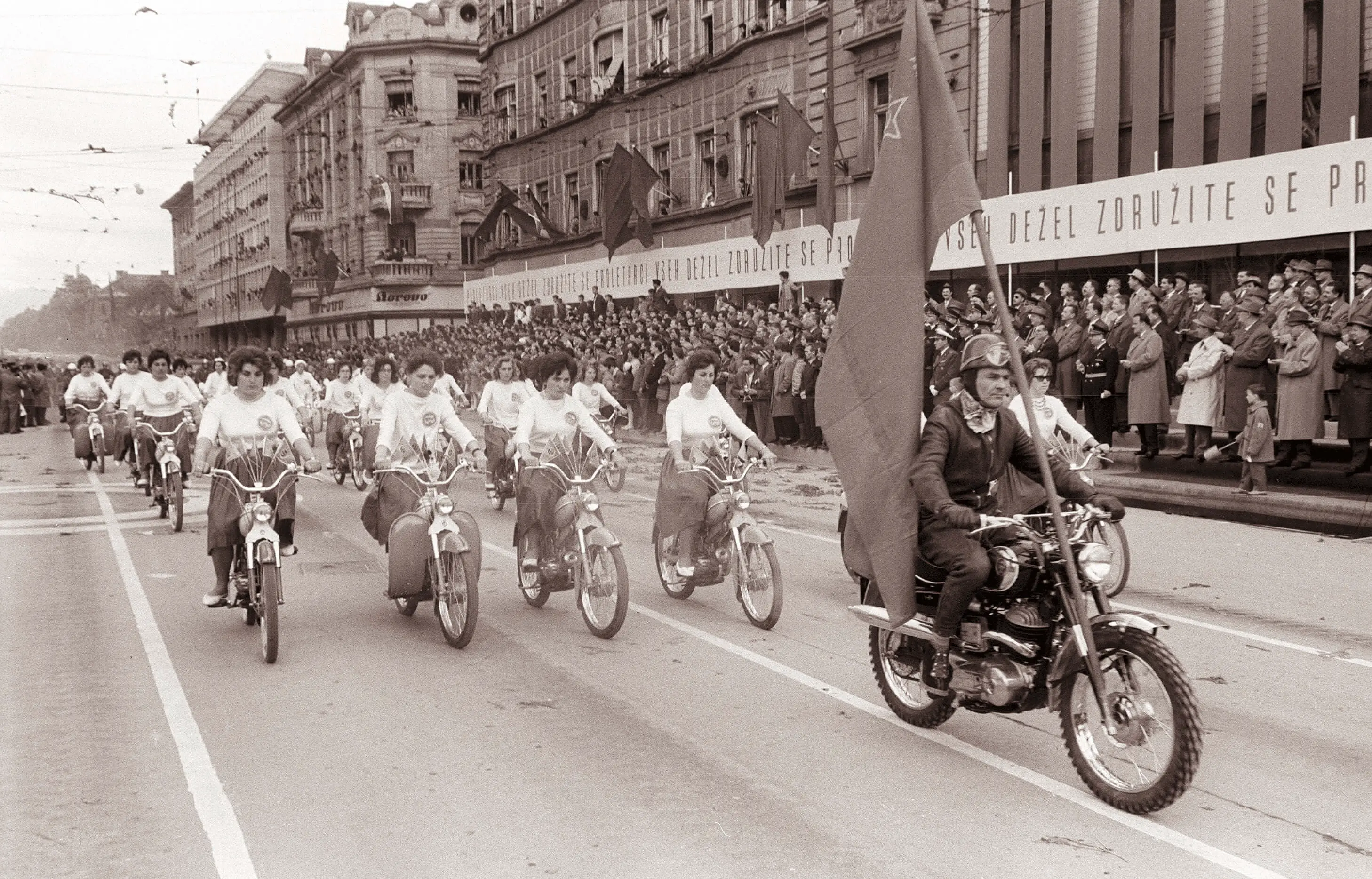
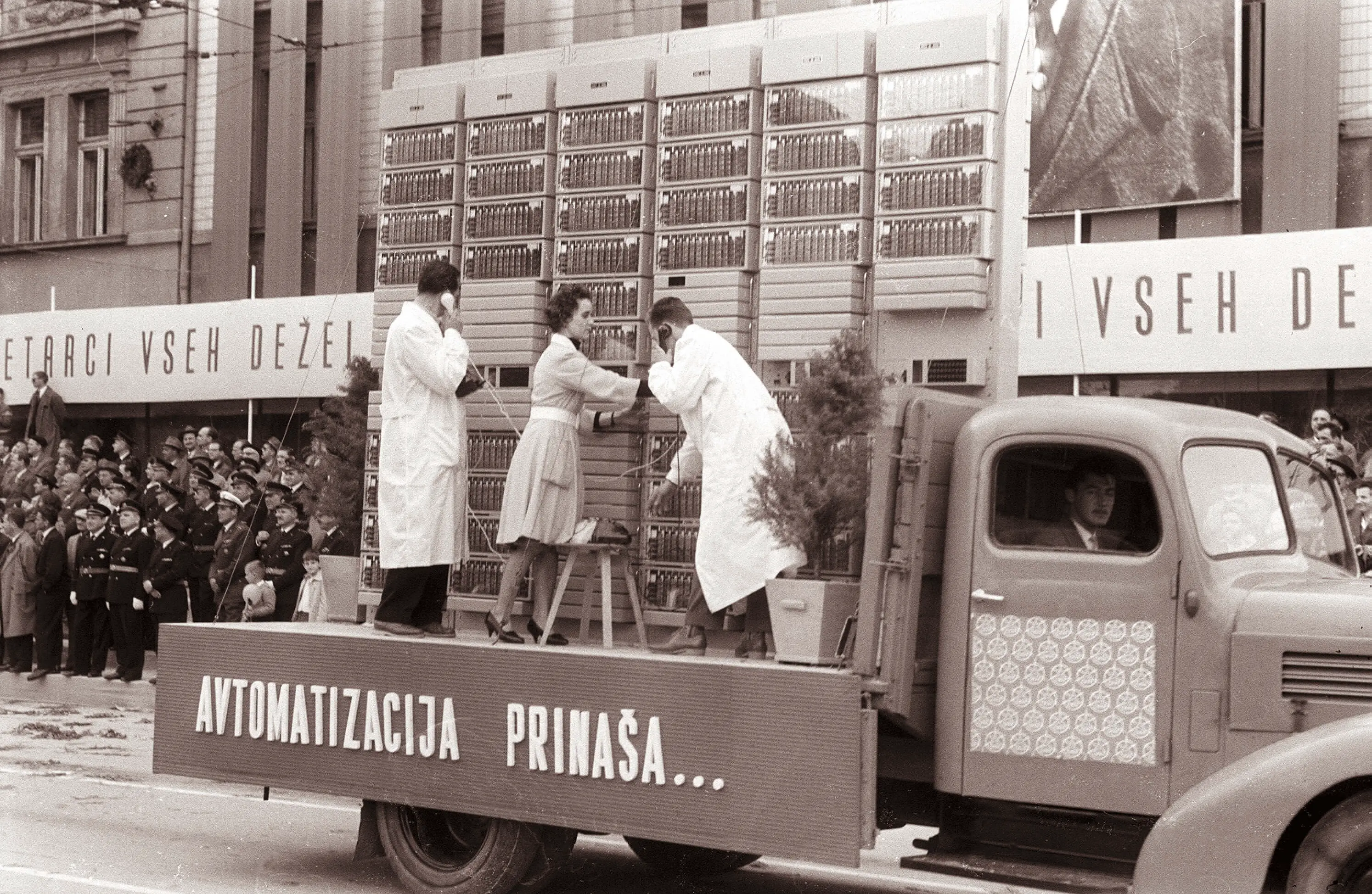
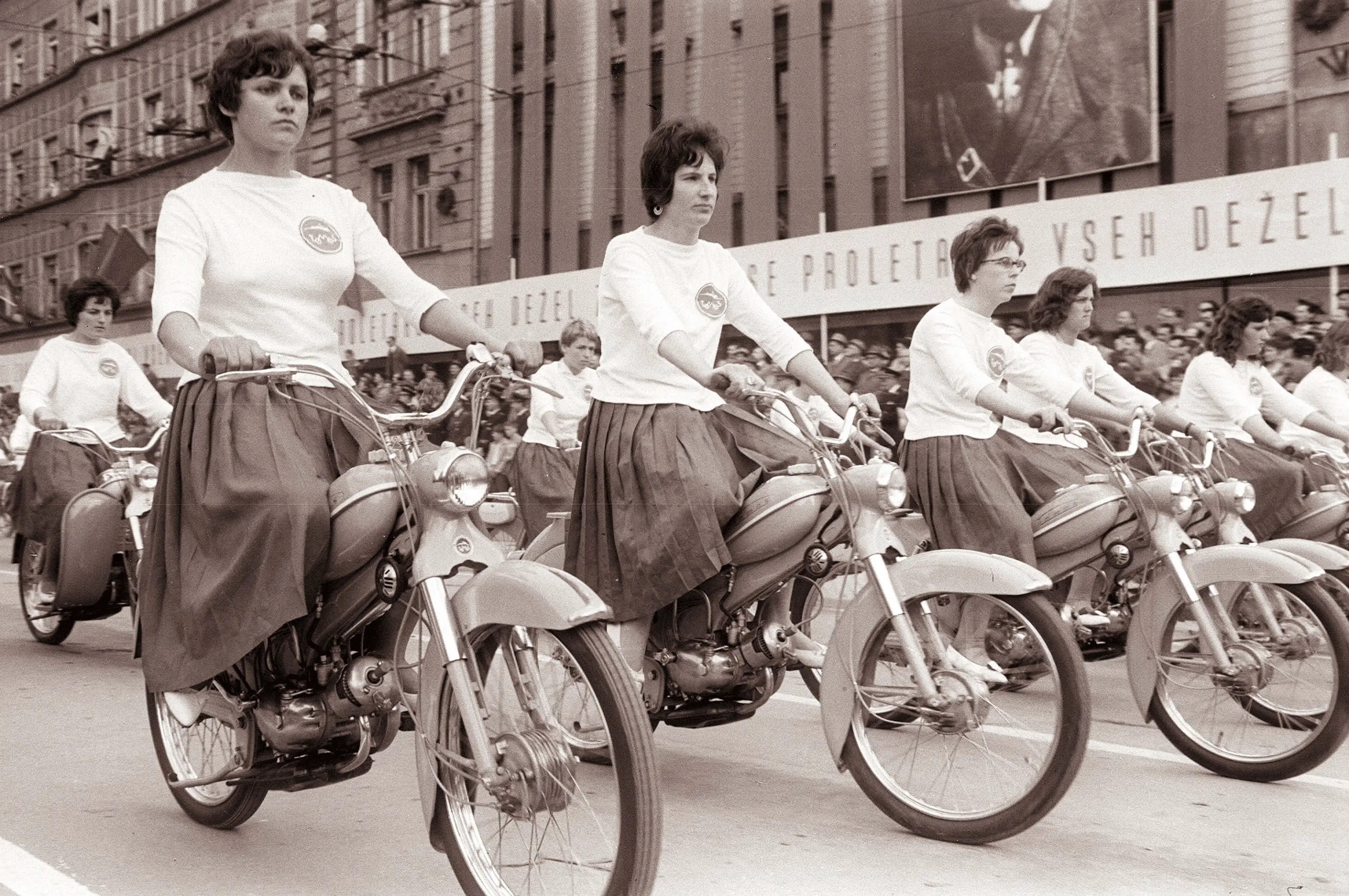
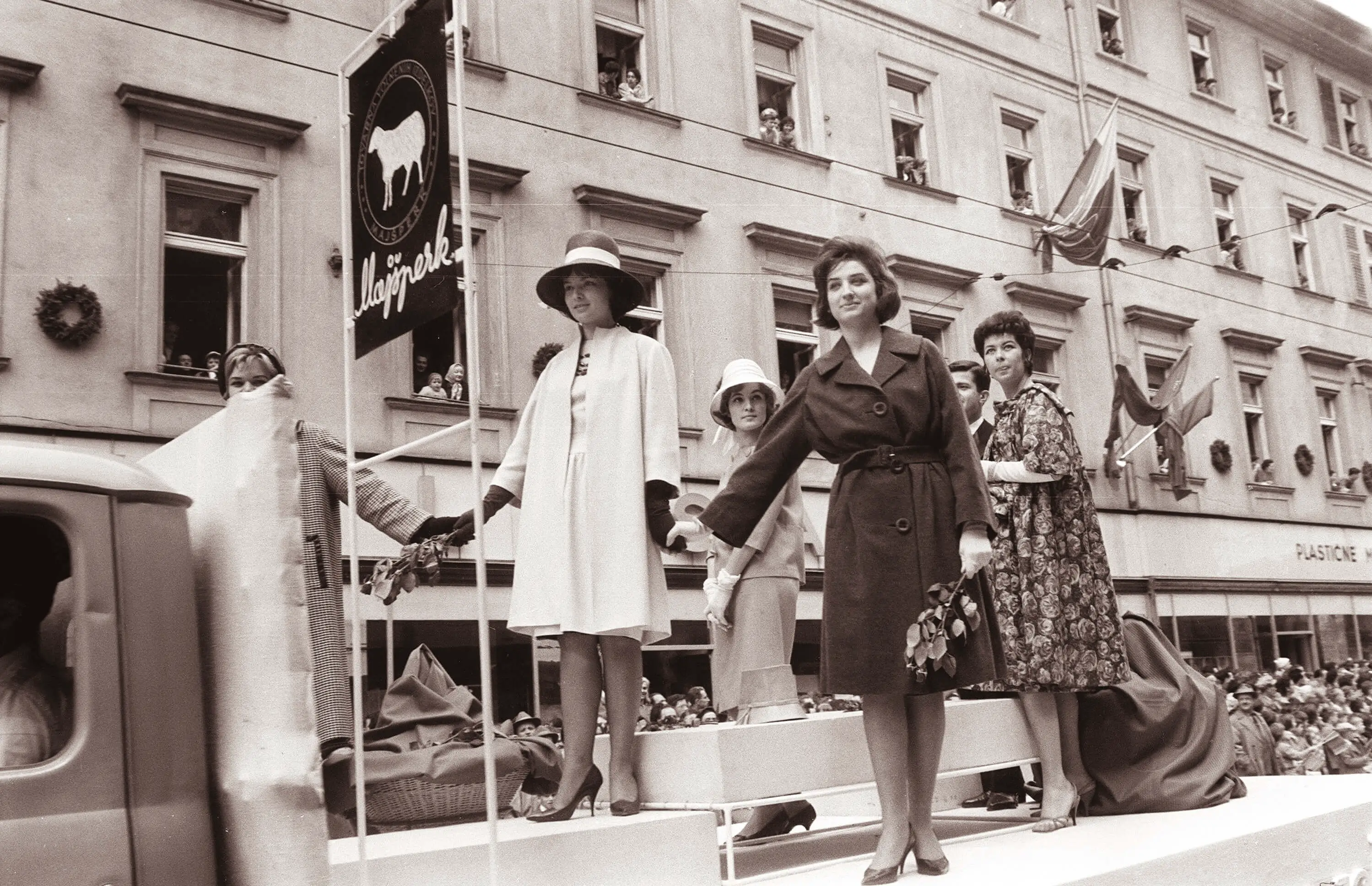
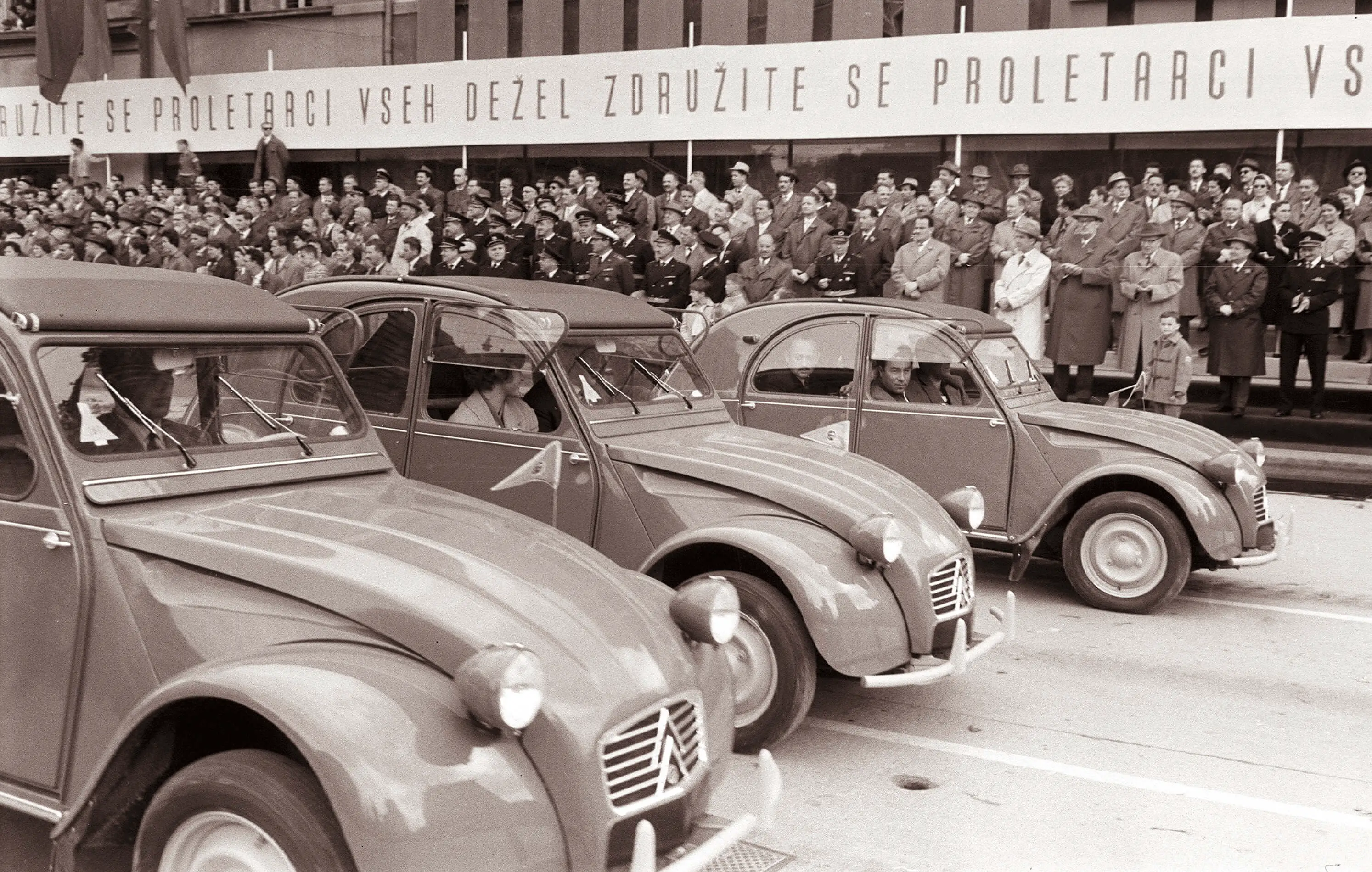
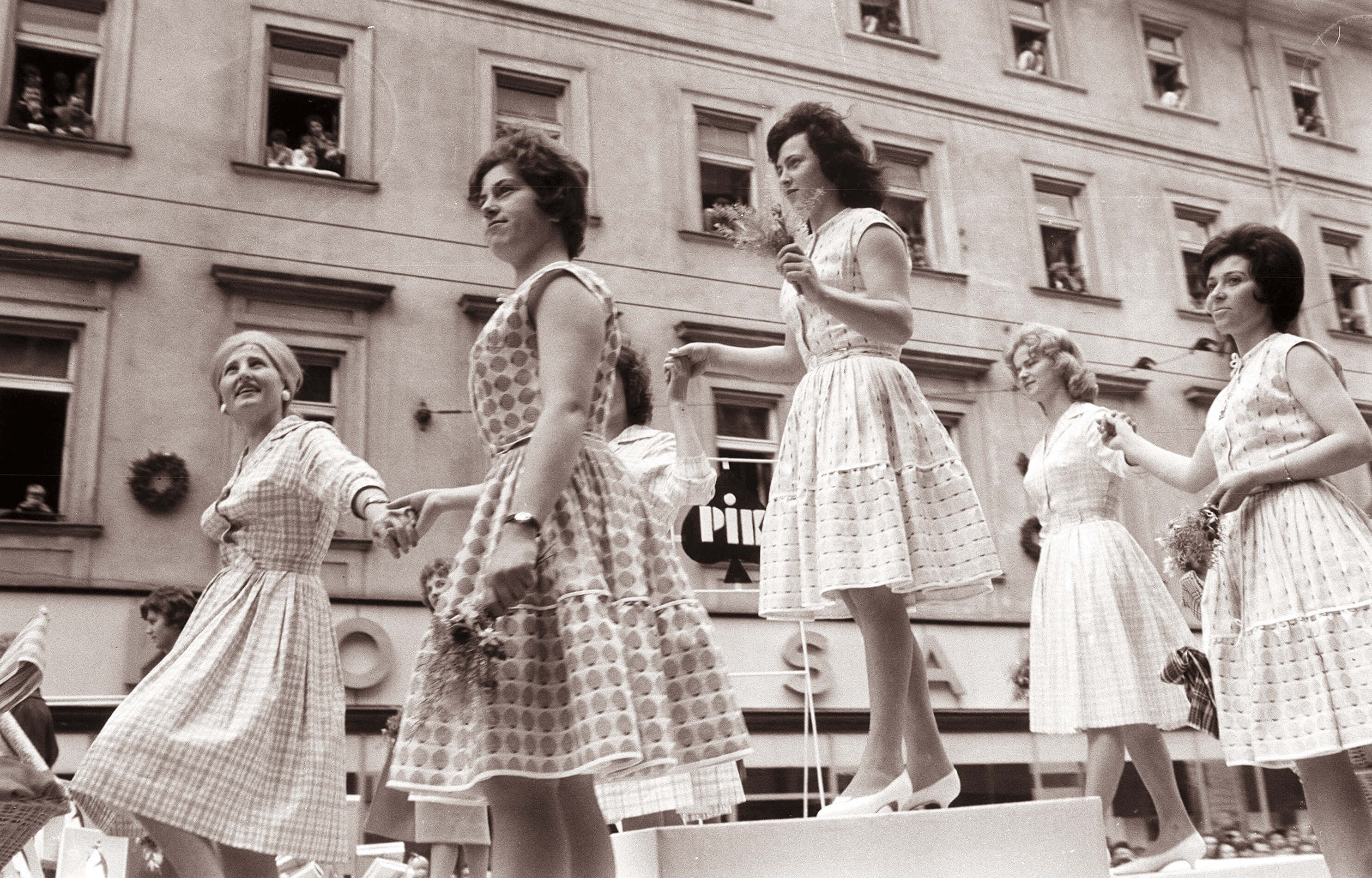
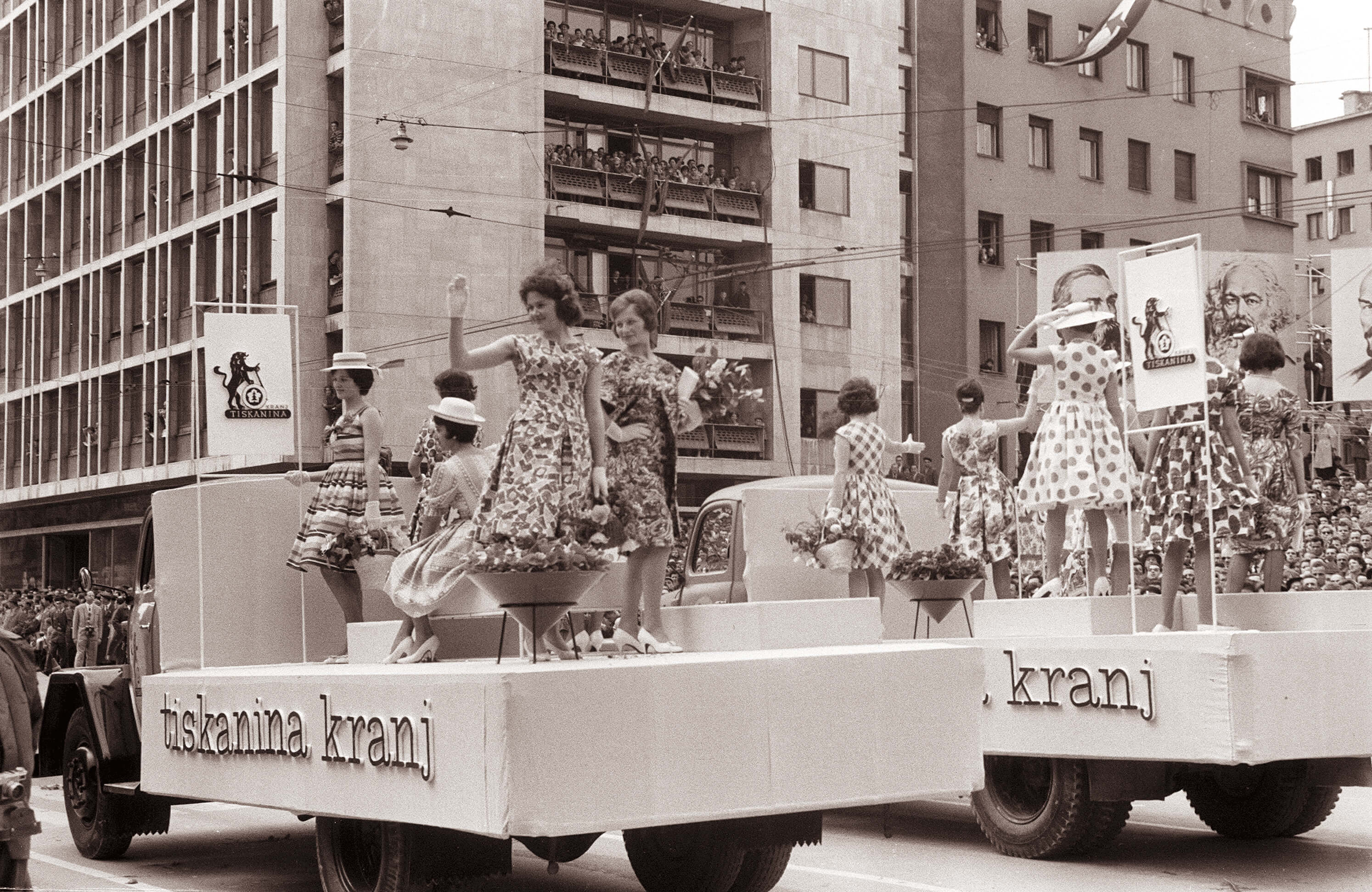
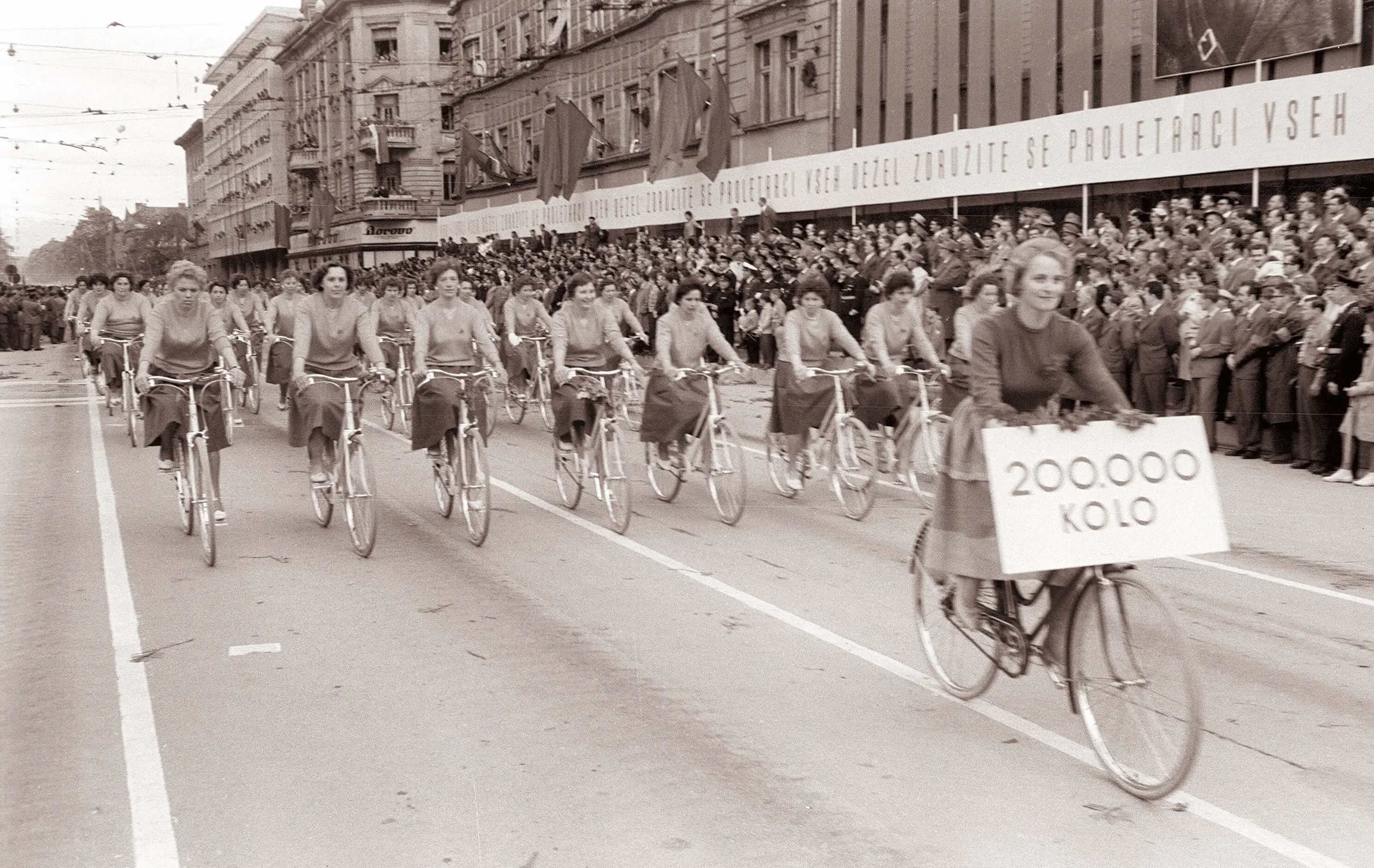
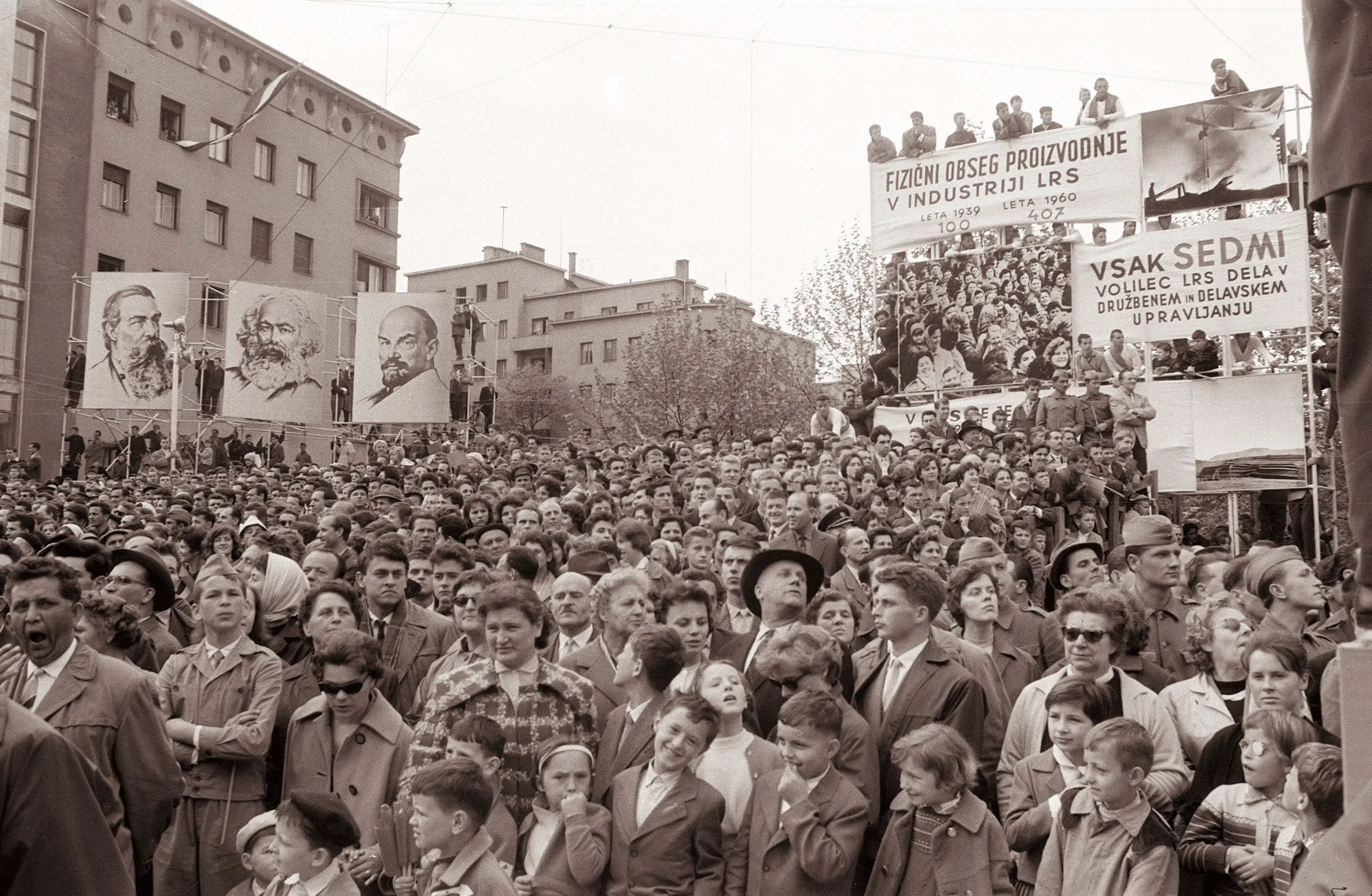
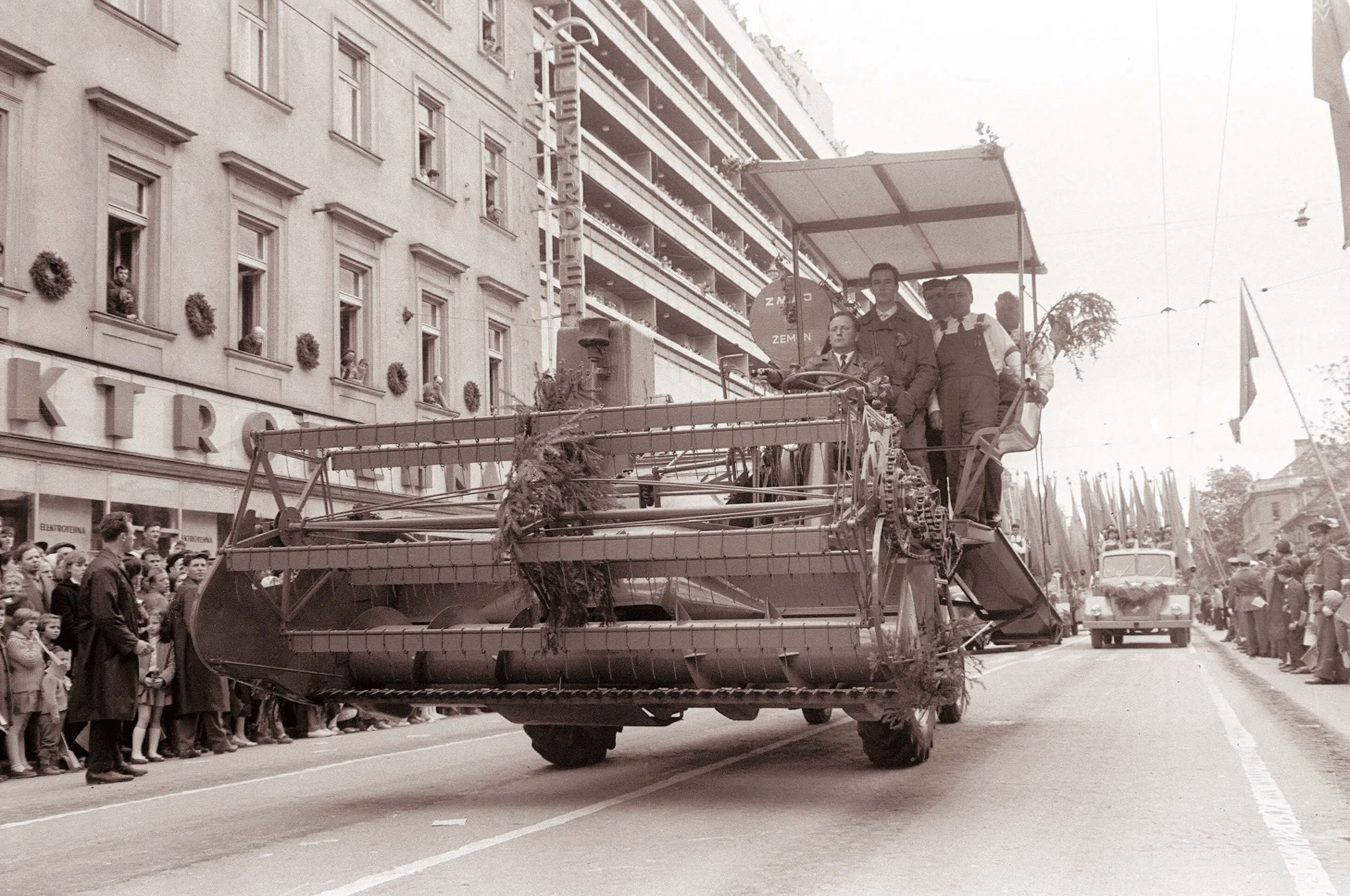
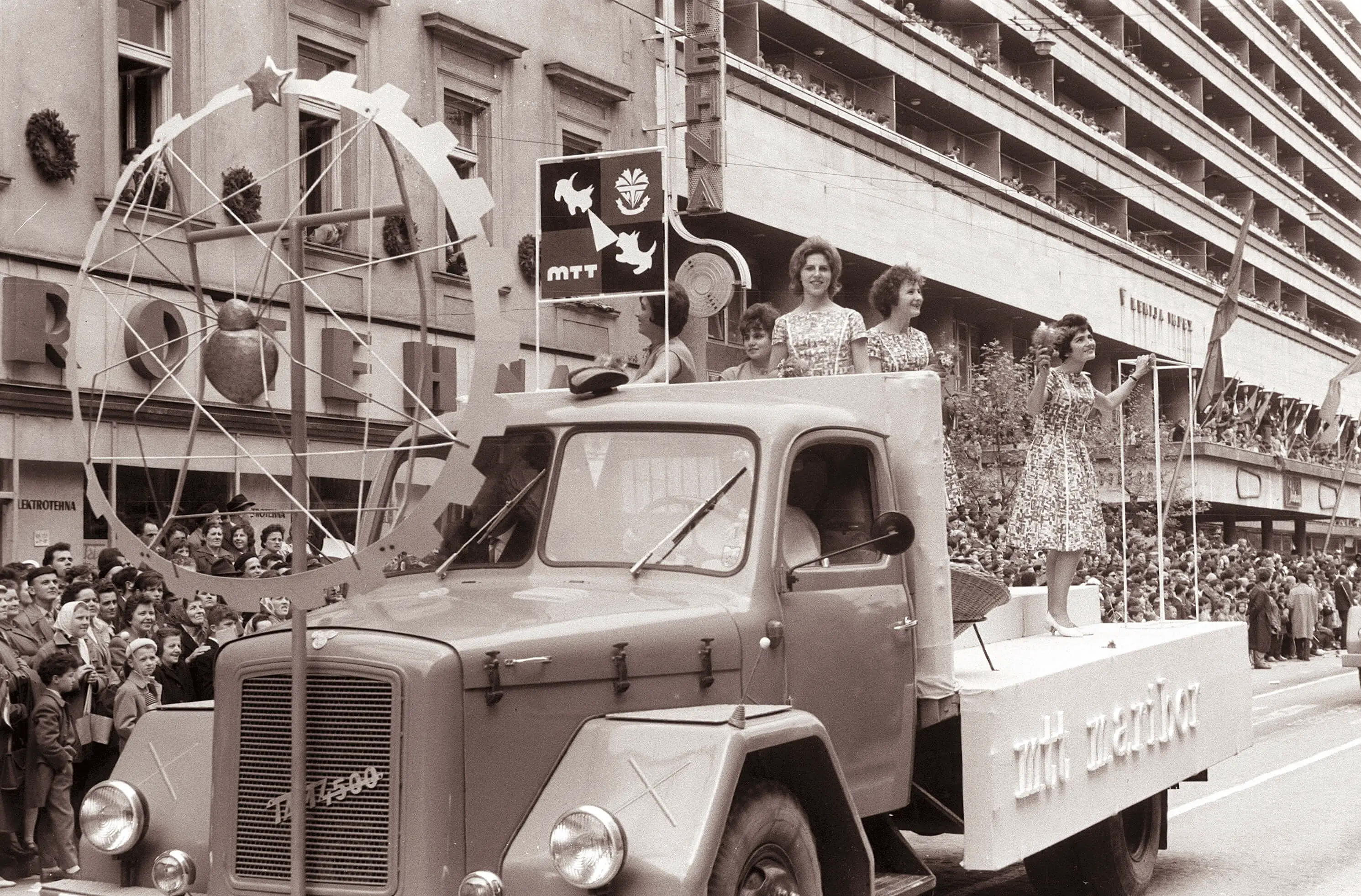
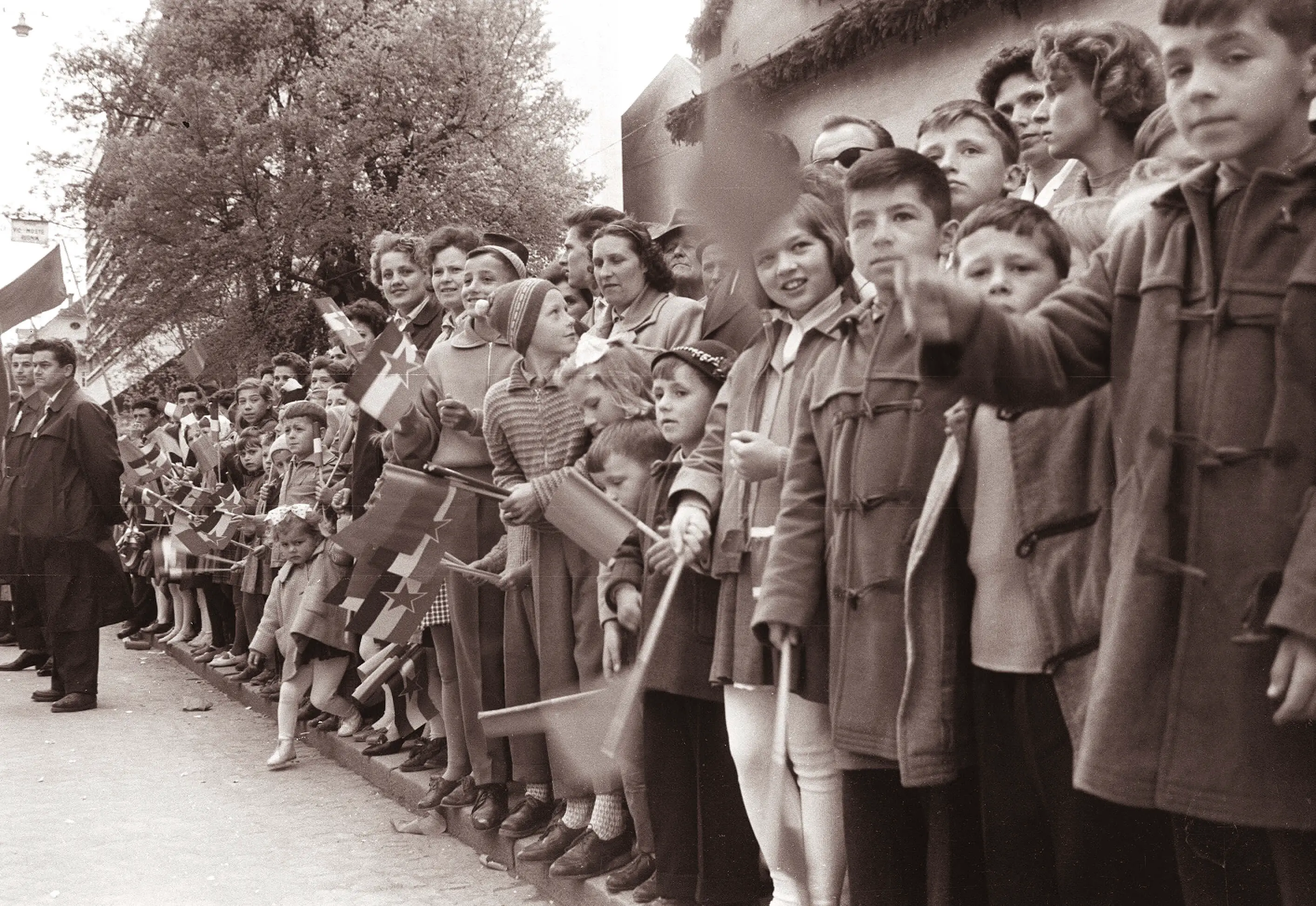
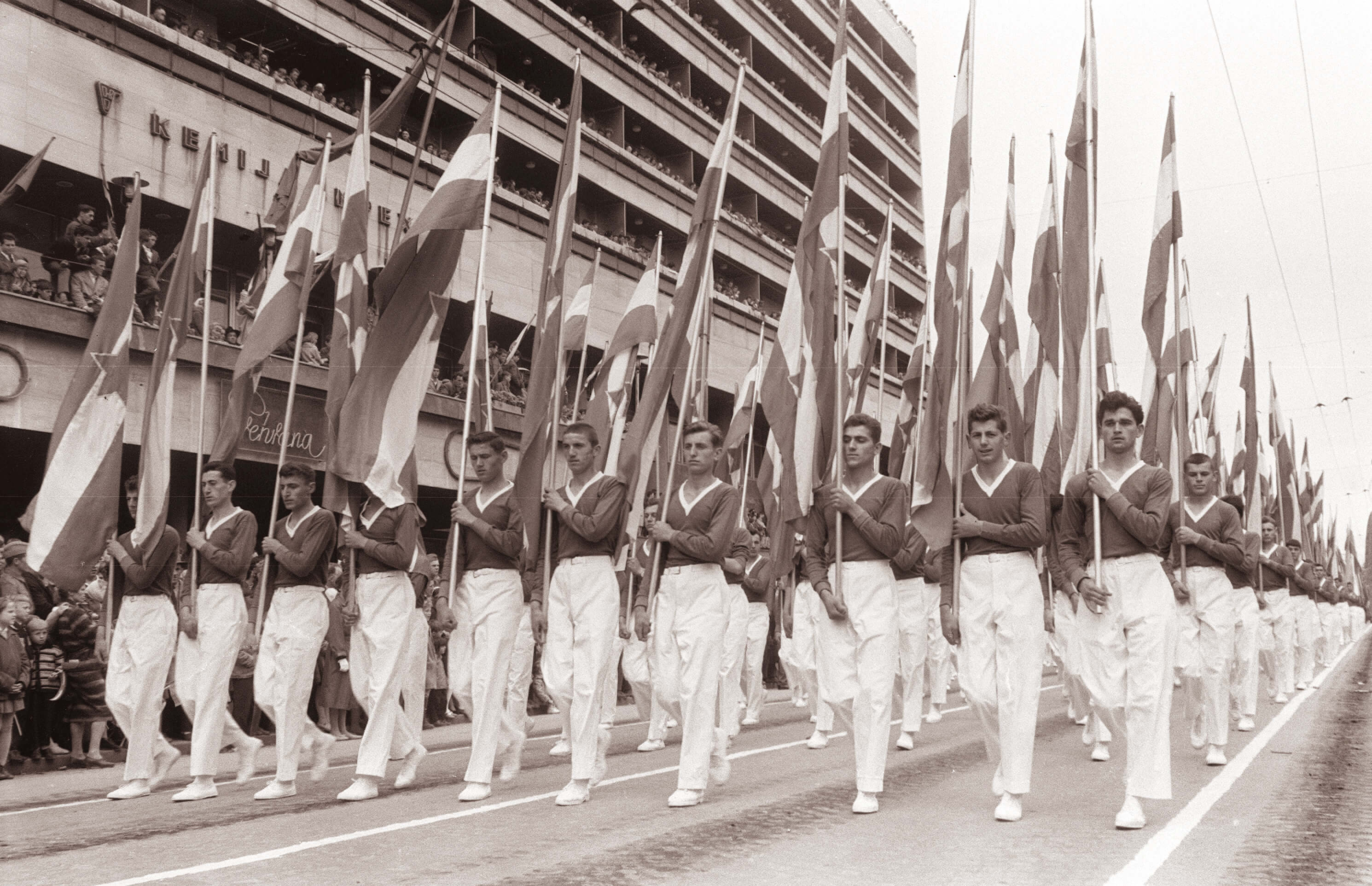
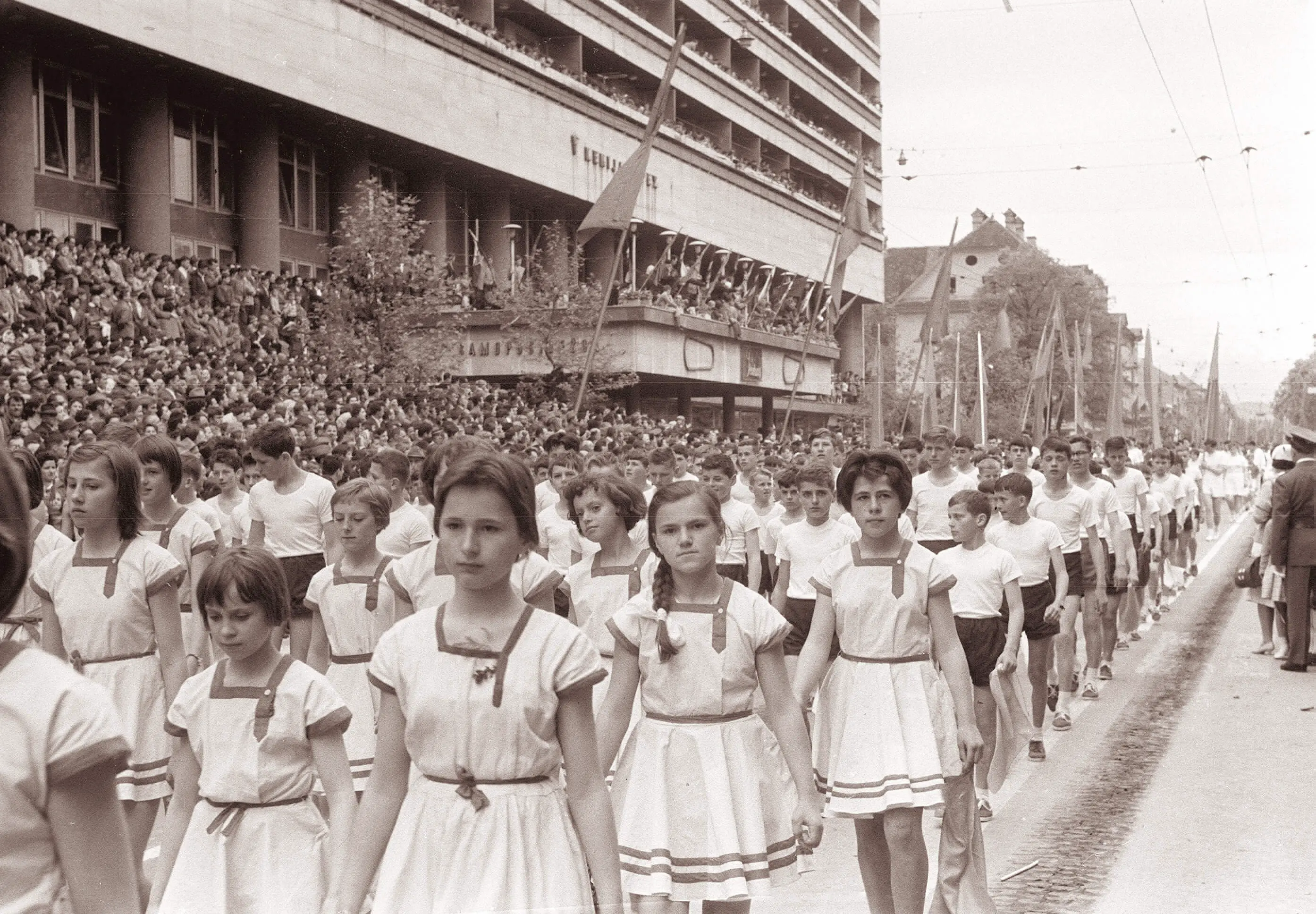
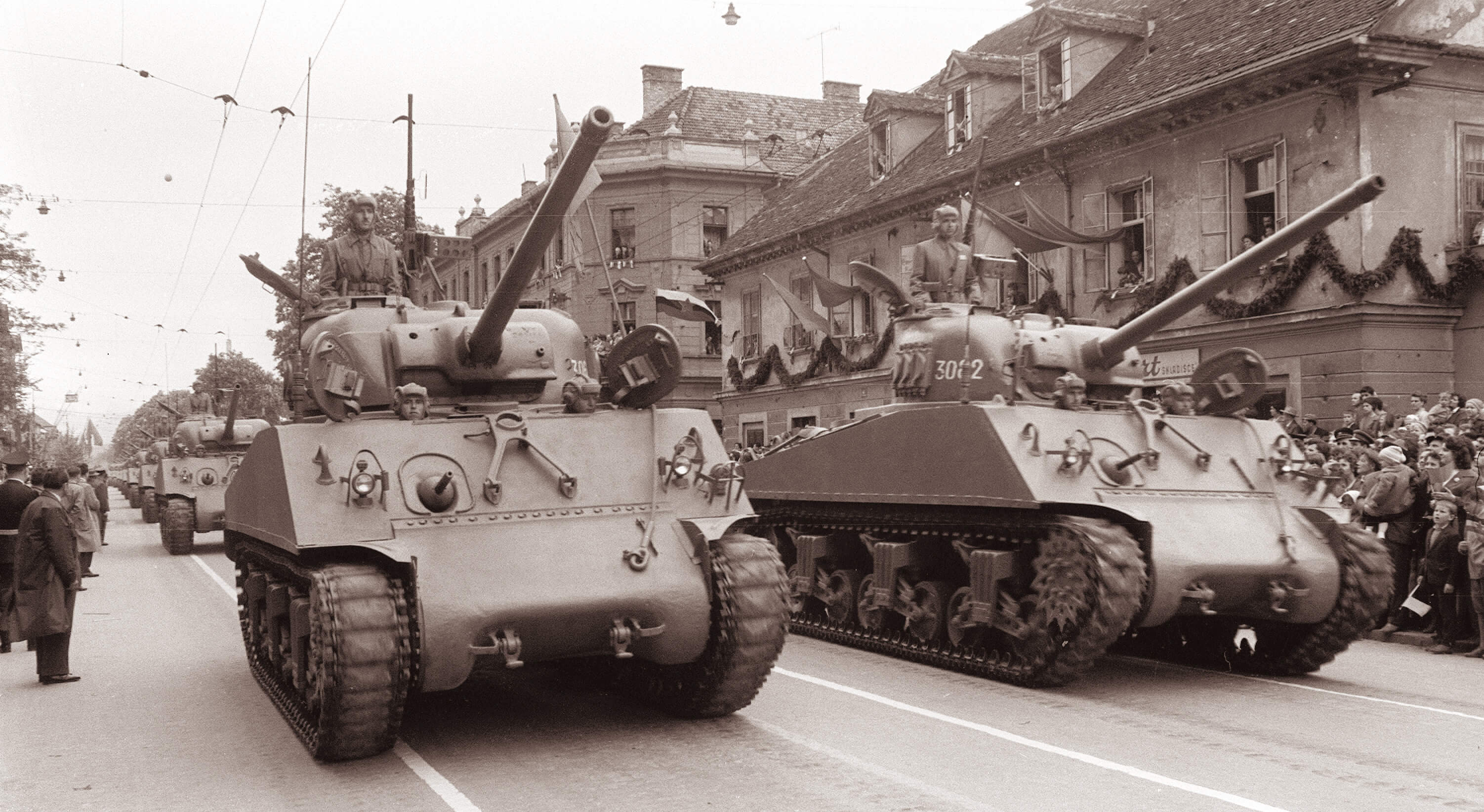
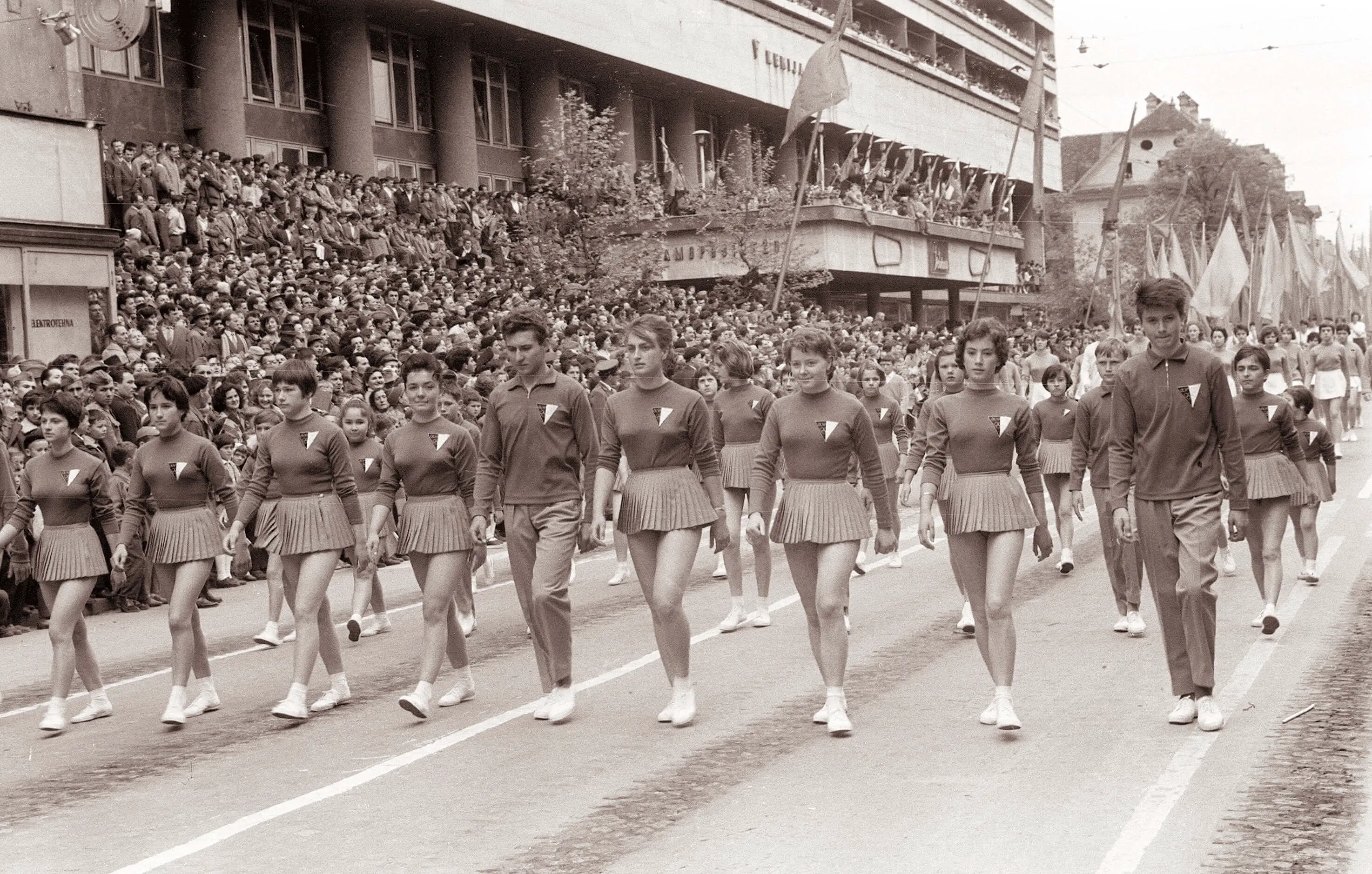
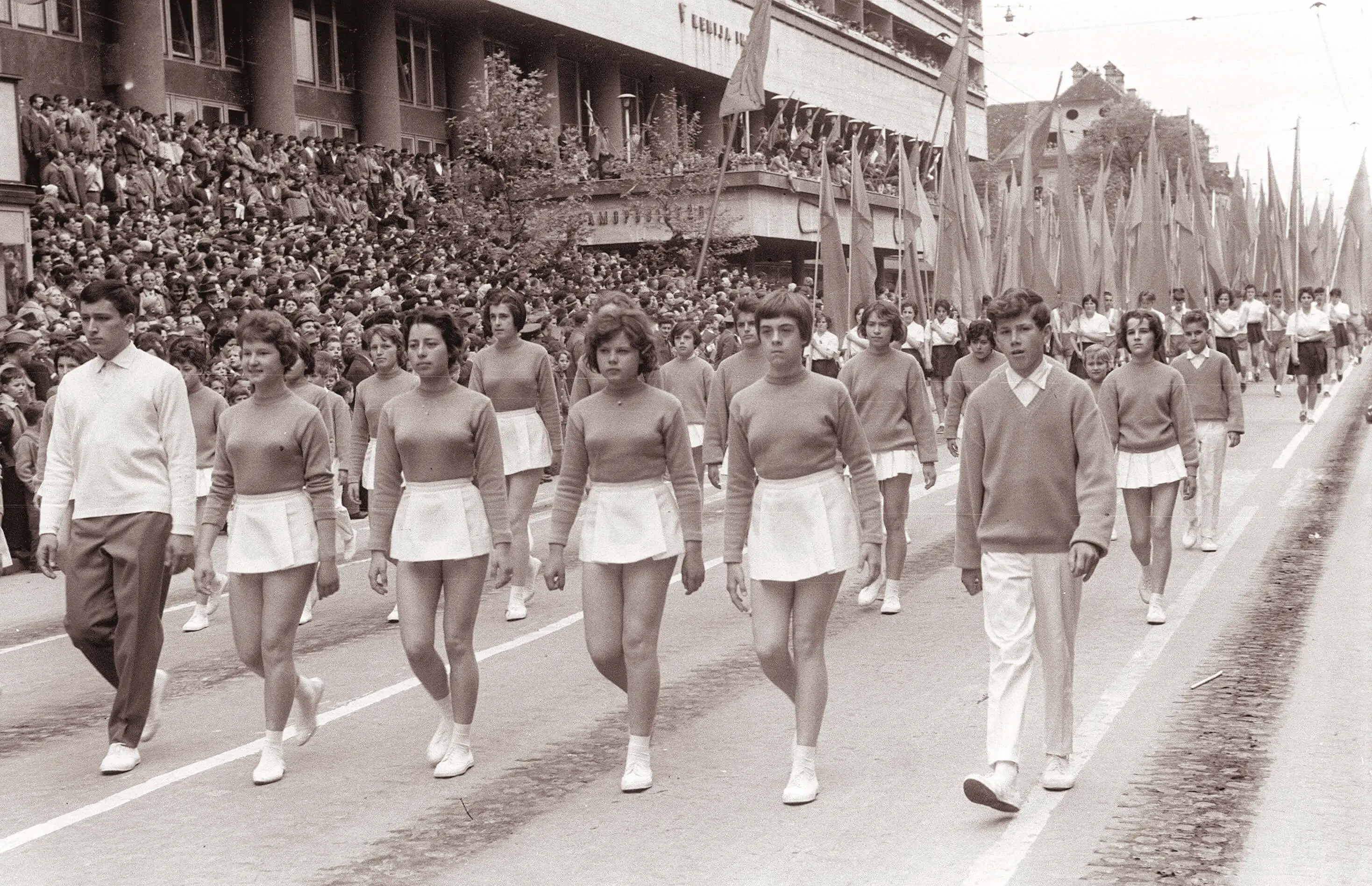
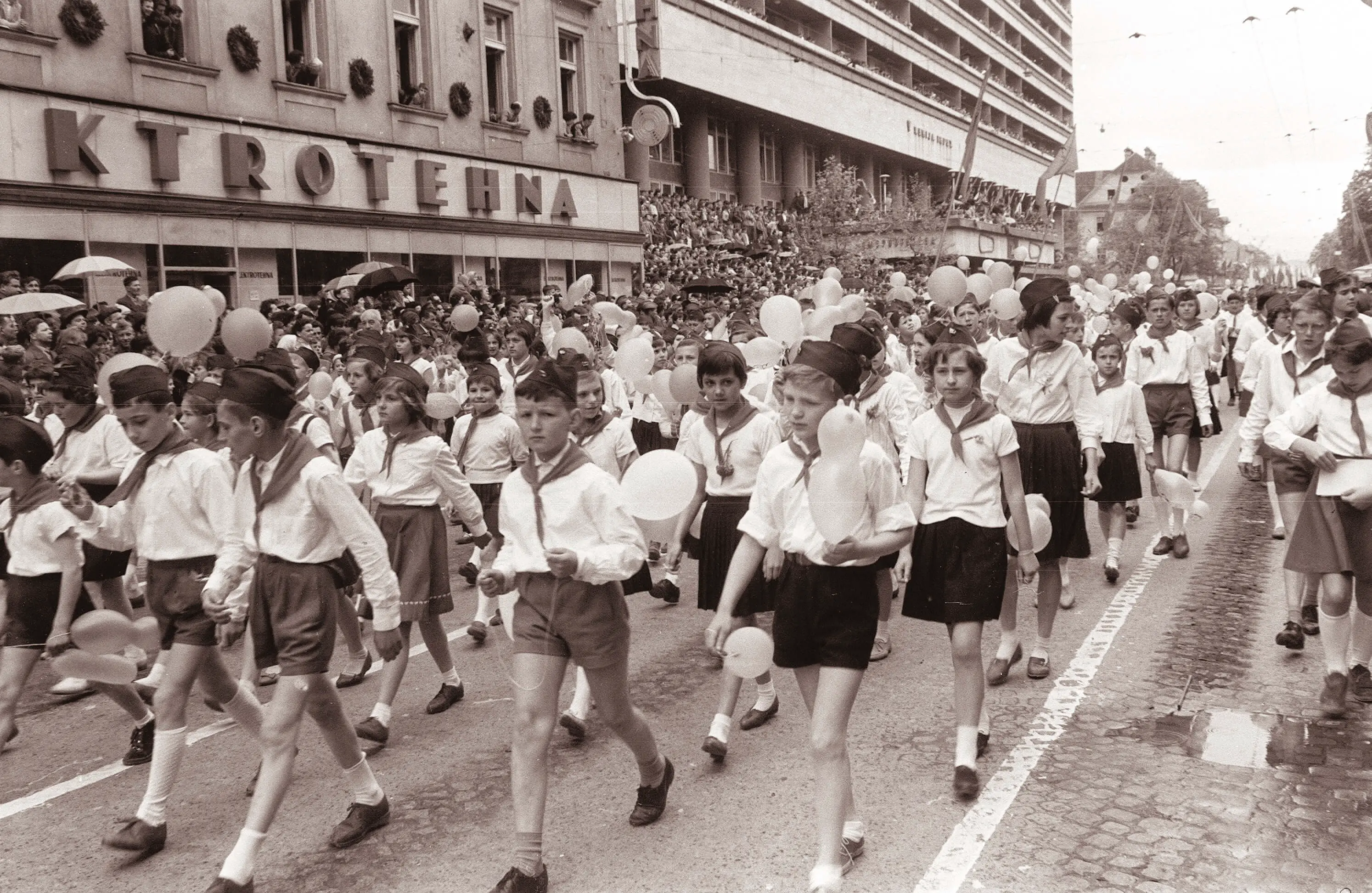
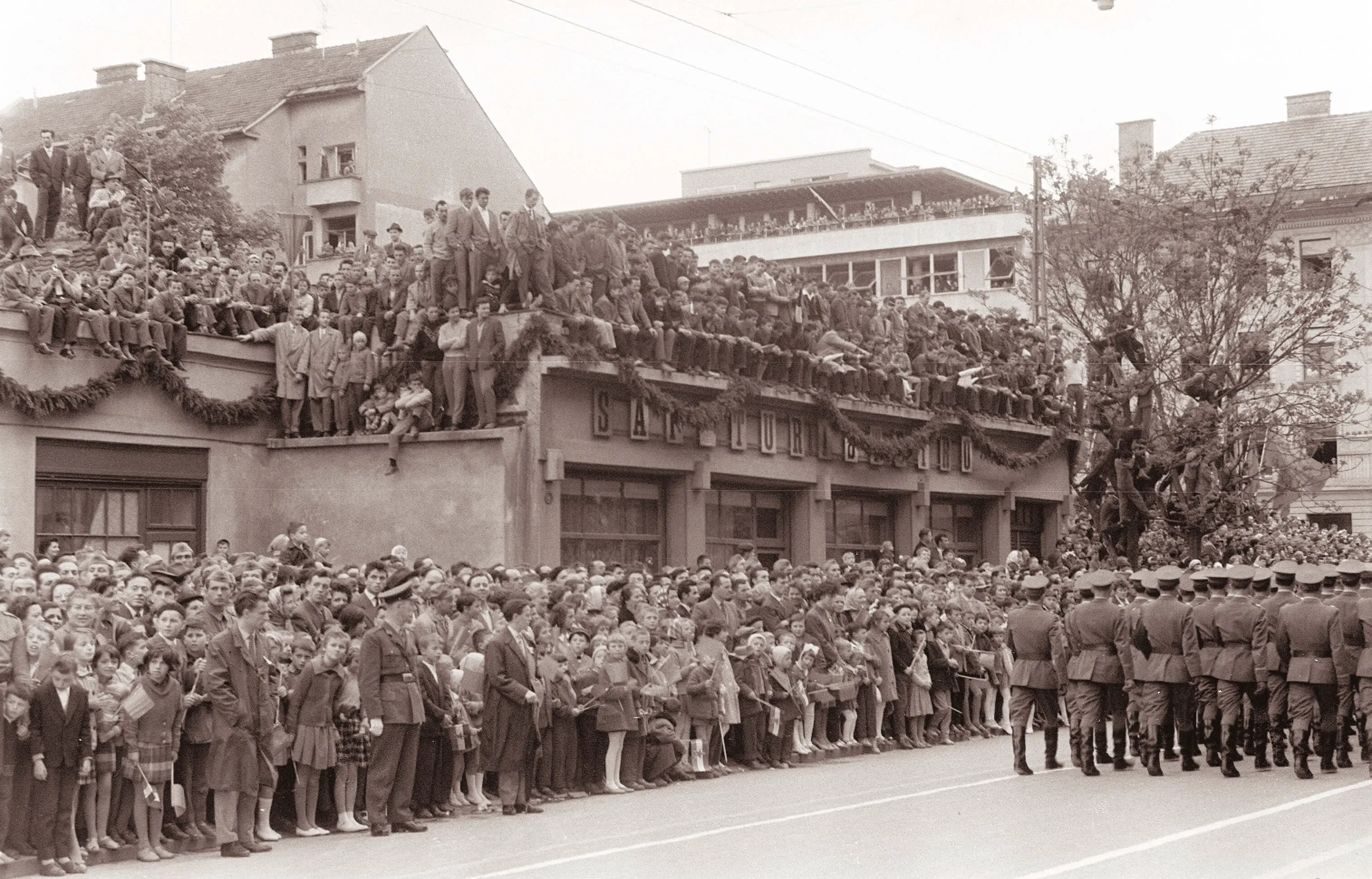
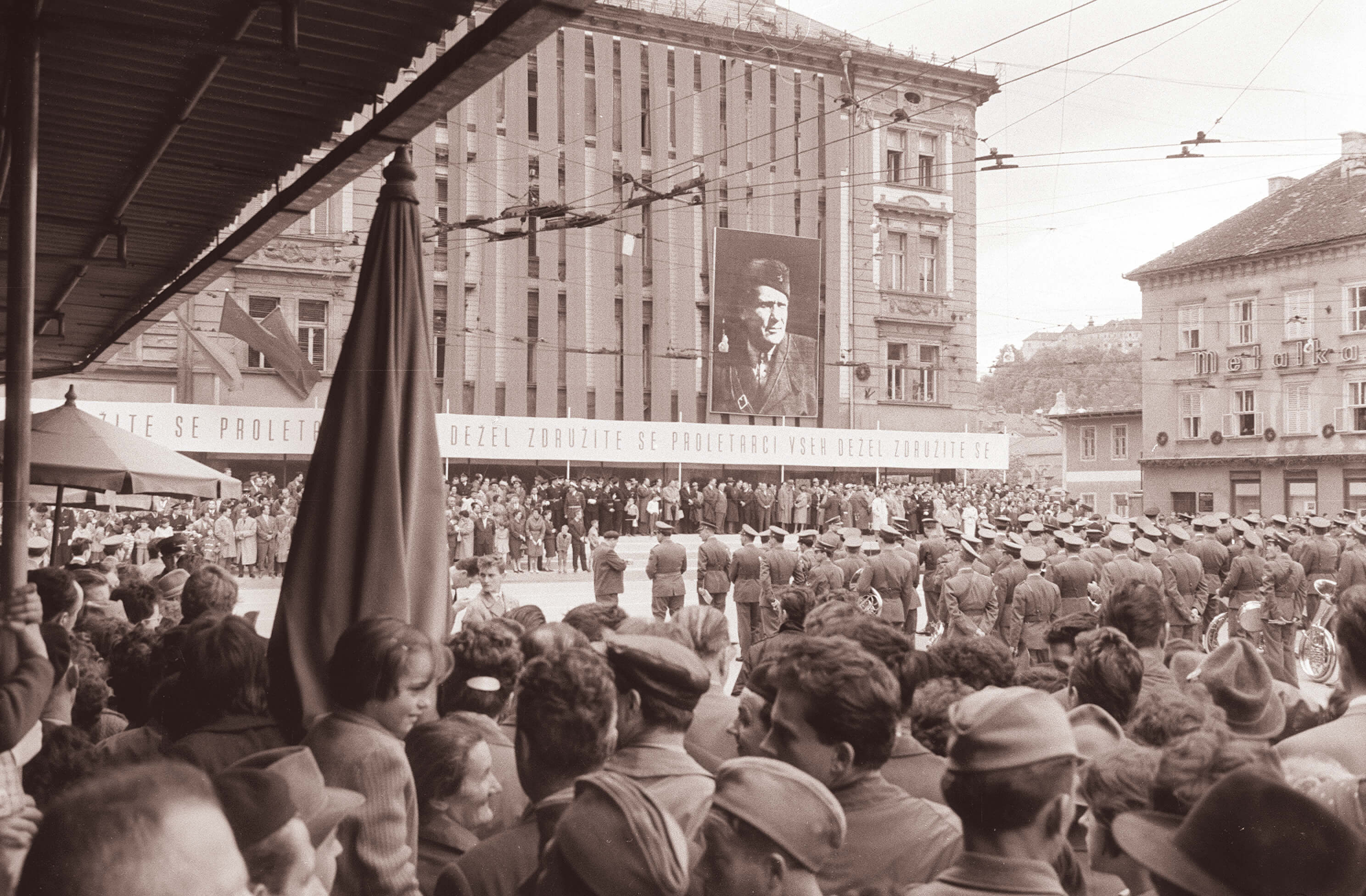
Other "old photos" stories are here





